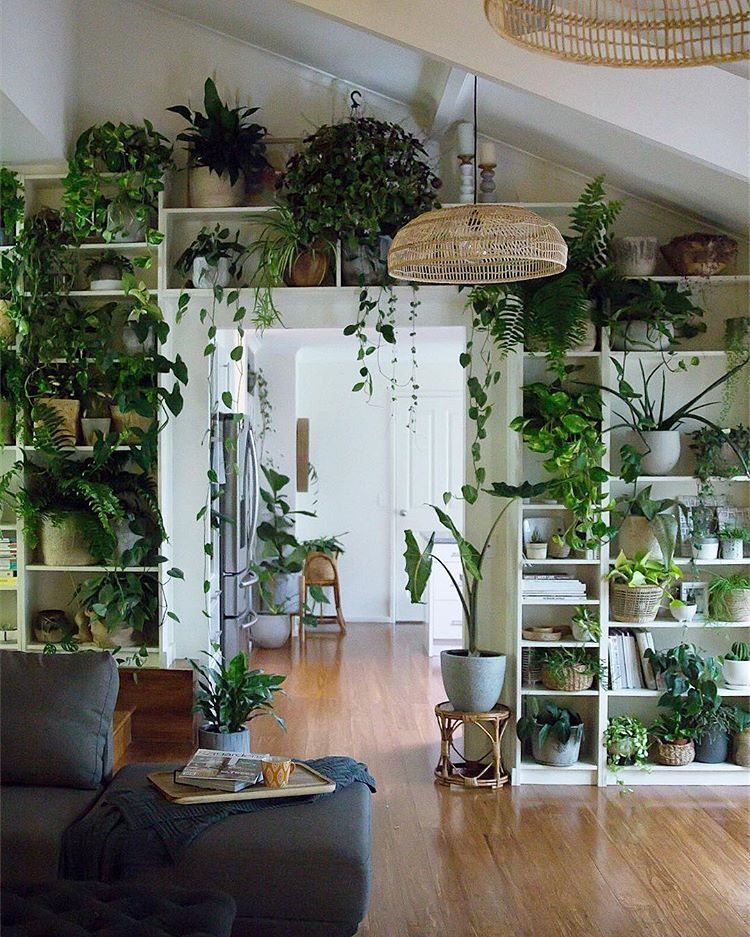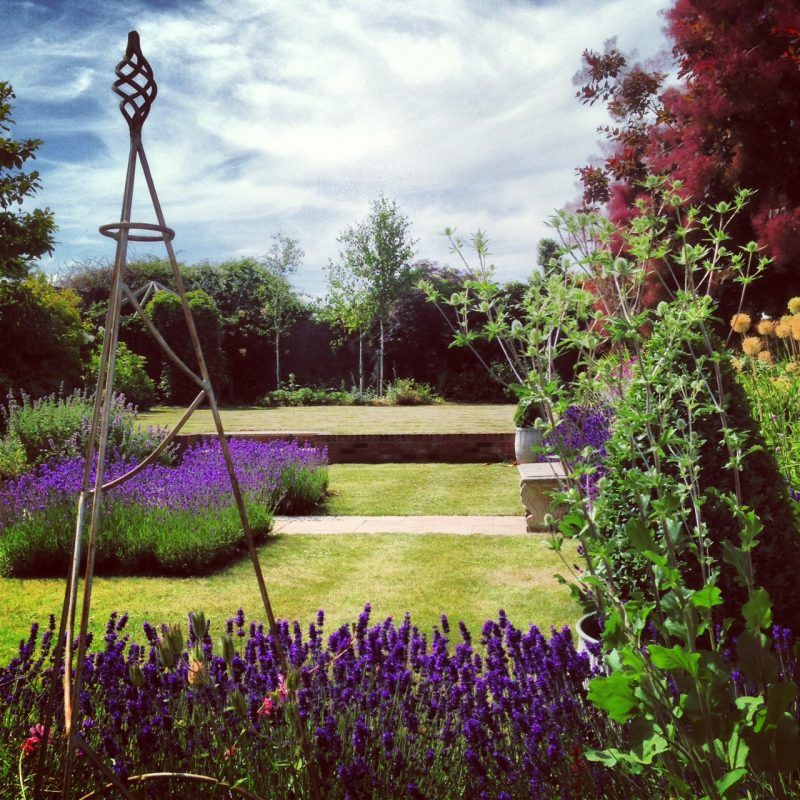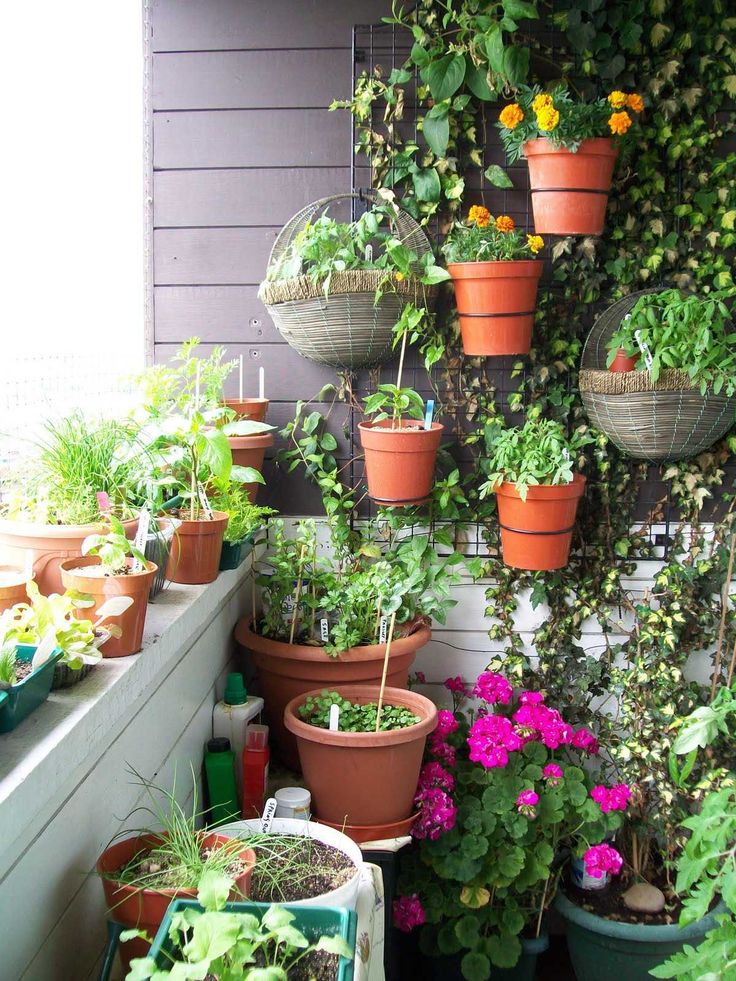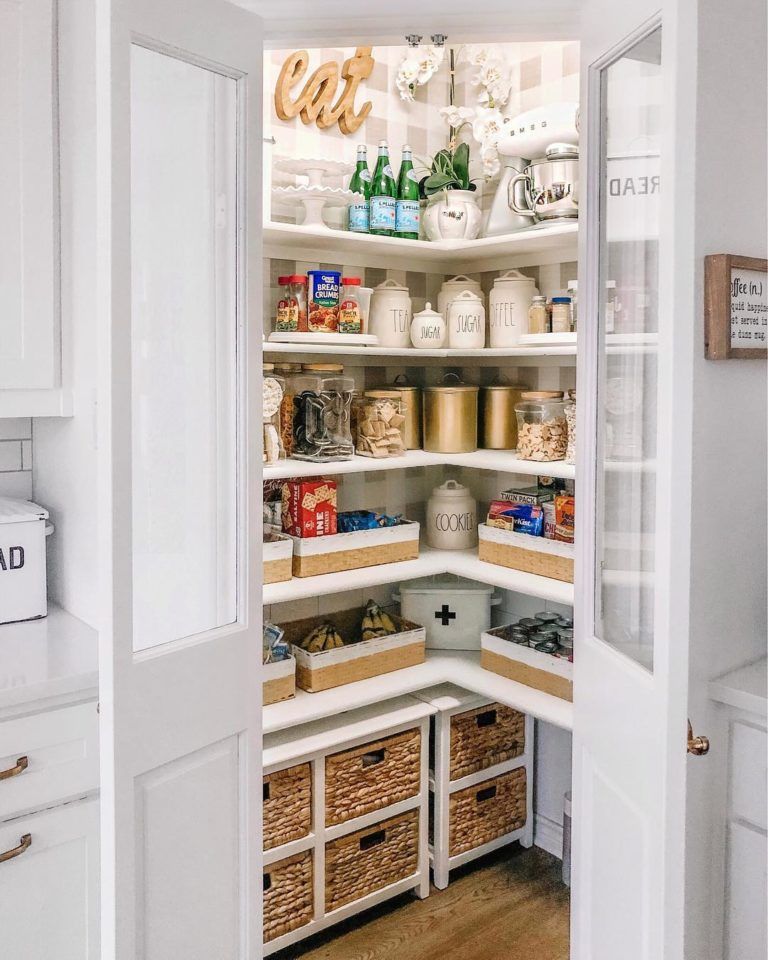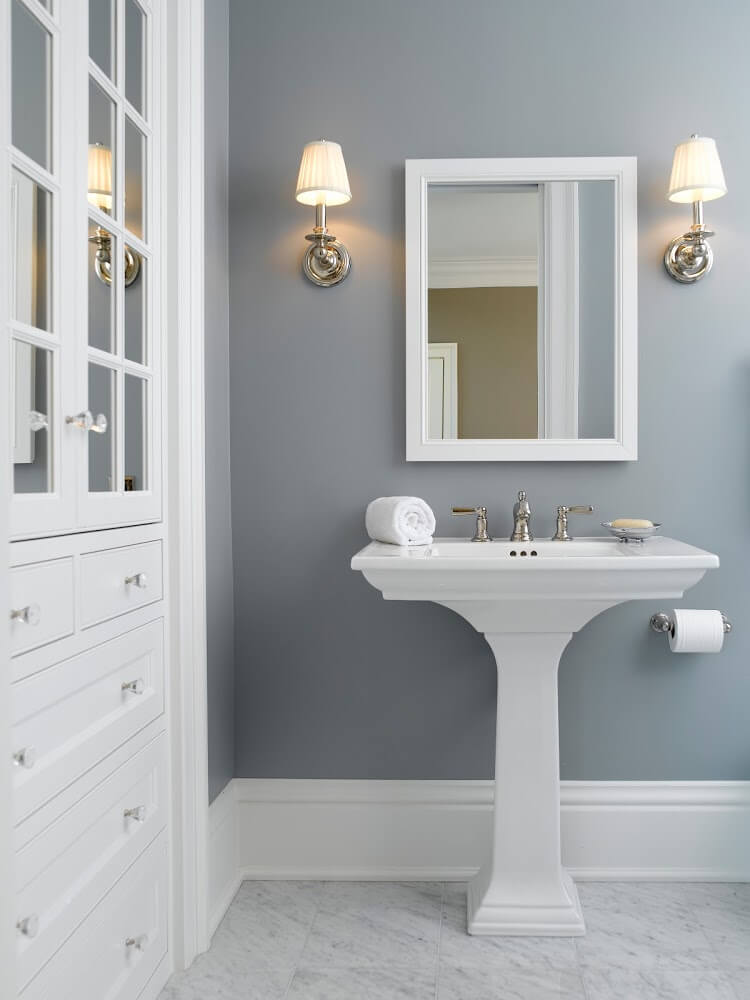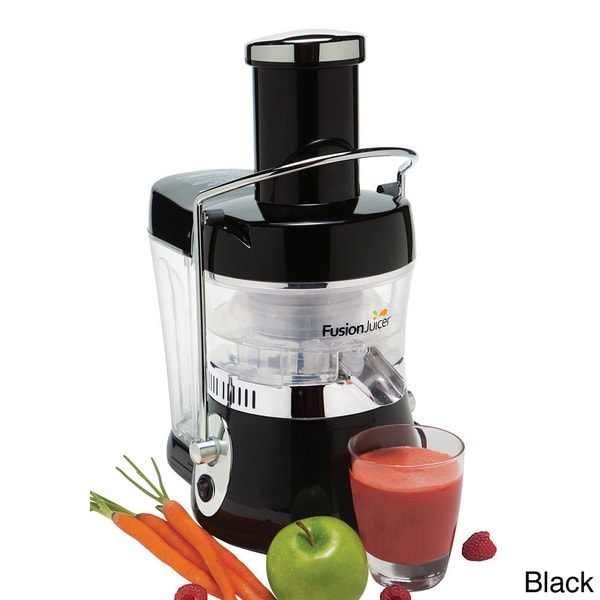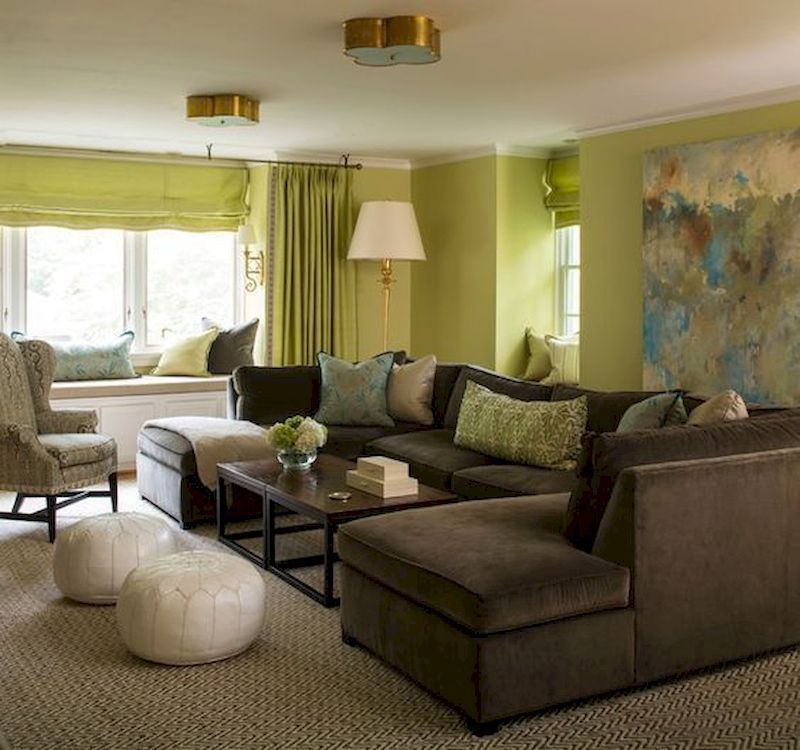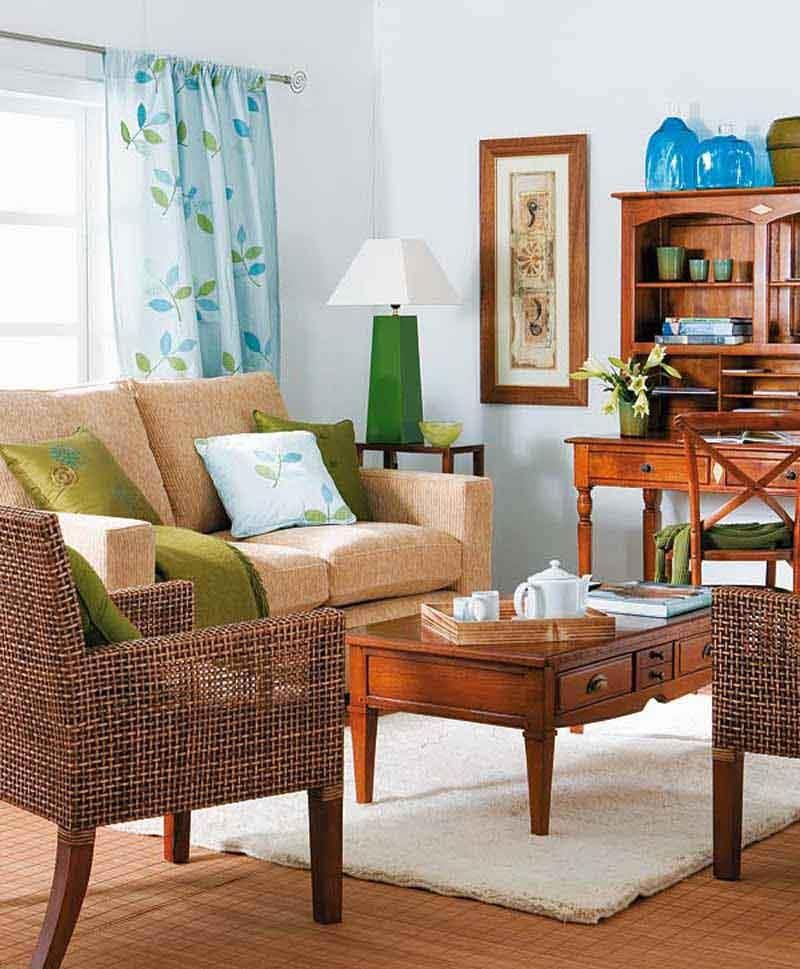Indoor plant decorating ideas
30 creative indoor plant decorating ideas (and none of them are wreaths!)
This article may feature affiliate links, and purchases made may earn us a commission at no extra cost to you. Find out more here.
Creative decorating with indoor plants is a thing!
The use of green plants in home decor is a trend that has been growing for years. The creativity of homeowners and interior designers has inspired an explosion of creative indoor plant decorating ideas to try.
Besides just being pretty and adding a fresh, organic texture to your spaces — whatever your design style — you’ll find that trying one or more of these houseplant decor concepts might be a great way to bring a little more life into your home.
Bonus: live plants are known to improve air quality, and can even naturally reduce stress.
Which indoor plants work best in creative interior design?
There are many types of house plants you can select for your design. Some of the most popular ones — most of which are represented in the gallery below — include:
- Bromeliad & tillandsia (air plants)
- Pothos
- Spider plants
- Snake plants
- Aloe vera and a huge variety of other succulents
And take note: It’s not just about putting a potted plant on your desk these days. Many people are using green plants for home decor as cleverly arranged centerpieces, vertical wall gardens, and unique stair-step enhancements — they’re even putting their propagating plants prettily on display.
We’ve put together this gallery of gorgeous house plants decor to help inspire your next (or first!) indoor plant decorating project.
Multicolored moss and plant landscape framed on a shelf
Guests might do a doubletake when they realize this impressionistic “painting” is actually a collection of live moss.
Living room with accent wall of leafy green plants
Even if your thumb isn’t exactly green, your rooms still can be! A vertical wall garden concept like this one lends itself well to artificial greenery, especially if you incorporate mainly silk varieties.
Indoor plants decorating idea: Terrarium with plants on a table
These dainty terrariums are an inexpensive and easy-to-assemble way to bring the vibrant colors and textures of indoor plants decor to your living spaces.
Three small pretty terrariums with plants of varying colors
Succulents and other plants in glass cases on shelves
This indoor plants decor integrates simple and low-maintenance succulent terrariums — while being an incredibly striking design concept.
vesnoi_ via Twenty20Plants hanging from stairs surrounding a reading nook
Decades of home dwellers have opted for the pothos-in-a-pot on their coffee table, but have you considered how well matched those trailing vines would be to an open-sided staircase?
Plants in glass vases in steps of staircase
…and if that isn’t creative enough, how about the same concept, but as a sort-of propagation garden instead? Brilliant!
iheartcreative via Twenty20Rustic old wooden ladder with trailing ivy
Ivy trailing on a rustic ladder would add a lovely cozy vibe to your space.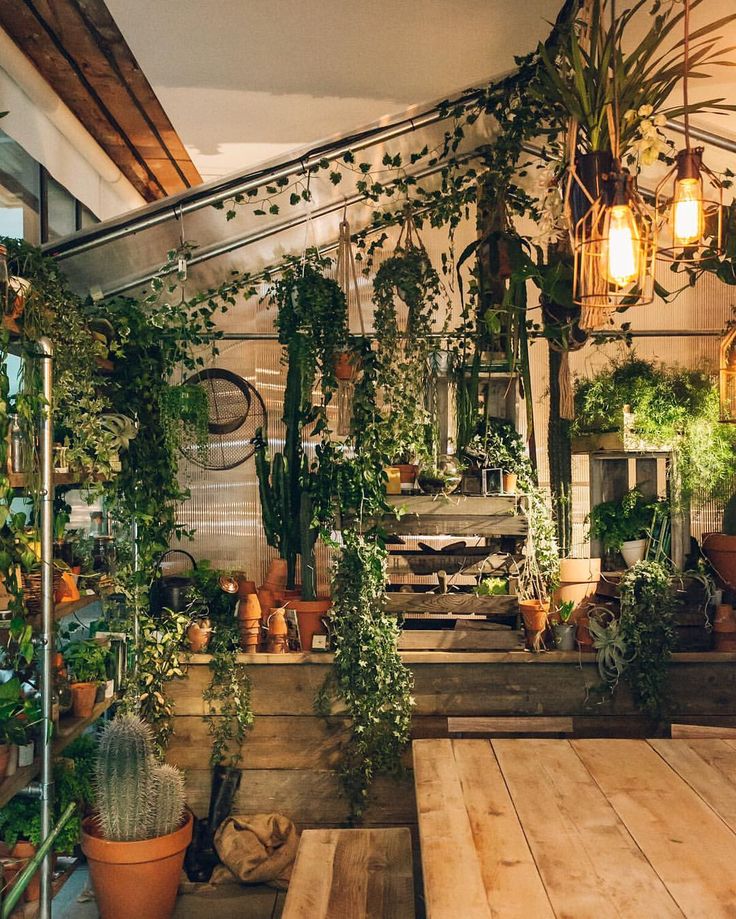
Green plants built into a bookshelf and ivy hanging from a divider
Greenery touches can help soften decor that features a lot of straight lines.
Photo by bialasiewicz/EnvatoSnake plant growing window barrier
An indoor window box filled with snake plants is an inspired way to let all the light in while still maintaining some privacy!
Several shades of living green plants on a wall
A vertical garden of indoor wall plants is a clean and simple decor statement that works especially well in minimalist, monotone design schemes.
Propagating plants make a beautiful wall decoration
Here’s another brilliant way to present plant propagation as a beautiful, living design element.
Minimalistic plant decor
Small wall-mounted wooden crates with artificial plant stems
Yes, you can have the look of plant wall decor that is low-key and extremely low-maintenance.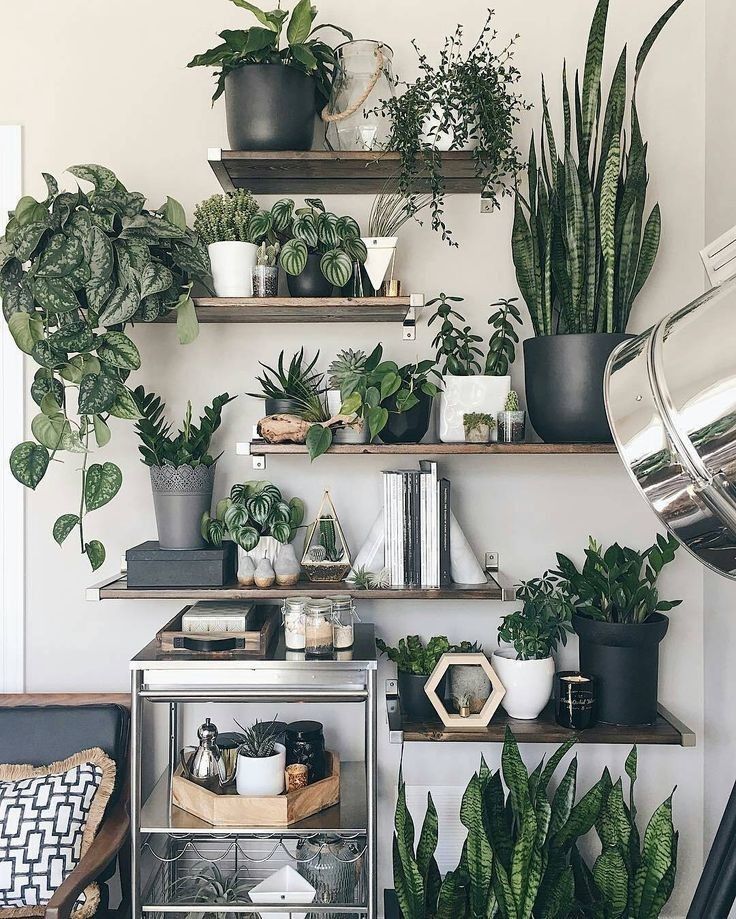
Branch with decorative macrame plant hangers suspended
If you’re a fan of boho chic or the 70s decor revival, sweet macrame hangers like these would be a perfect touch that marries a less fussy modern design ethos with a retro, bohemian vibe.
White wall decoration with cactus in a pot
Show off your cactus and succulent collections with wall-mounted crates serving as shelving. This idea makes a lovely decor statement, while also freeing up counter- and tabletop real estate.
Tillandsia air plants suspended from seashells
Low-maintenance air plants don’t need dirt to thrive, and they look pretty amazing.
For example, look below for an unusual way to display your air plants and a seashell collection. (See some more of the kinds you can get here.)
Picture by NewAfrica/Deposit PhotosSimple shelf with two small trailing succulents
Tip your terrarium concept on its side to display on a wall shelf like this — an especially effective look for trailing succulents.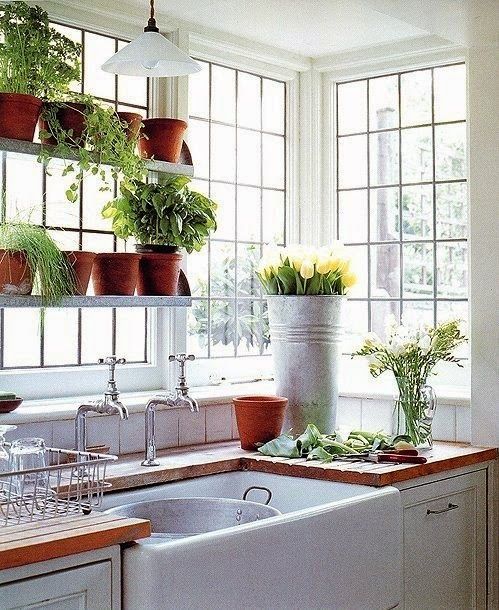
Wall-mounted collections
When you love succulents and houseplants, you probably have a few… or 20. We understand this passion. Think how freeing it would be if the only limit to this indulgence was the amount of wall space you have available!
The following set of inspo photos feature a lot of creative ways to cozy up your decor with an indoor plants wall.
Matching terra cotta plant pots hanging on a wall
Plants in bubble terrariums on a wall with retro wallpaper behind
Dress up your wall by putting some plants in mod-looking plastic or glass bubble planters like these!
rodrigodaibert via Twenty20Wall of 12 simple painted cans with small plants
ulianazhyhai via Twenty20Brick wall with wall-mounted plant pot holders
Potted plants hanging on the wall
shaai20620 via Twenty20Wall with small white shelves and little potted plants
These beautiful little floating wall shelves with molded edges (like these here) make sweet homes for tiny plants and knick-knacks.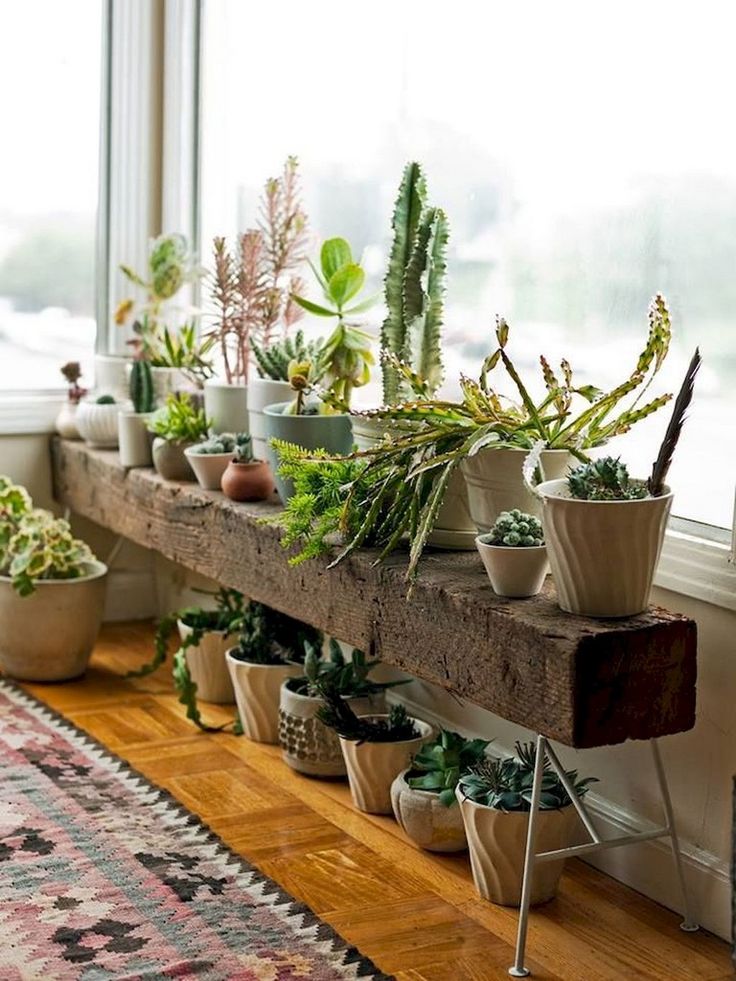
White on white modern houseplant display
All white everything decor really makes your plant babies pop. They will be the focal point in this design scheme!
5 wall-mounted planters in a staggered arrangement
micheletakespictures via Twenty20A wall of simple plastic planter boxes with live green plants
doodiebearz via Twenty20Grid frame with green potted plants
Here’s an eyecatching way to mount plants on the wall that is surprisingly simple: a metal grid frame, with loops that fit matching pots.
Pretty wall of super colorful plant pots with live plants
A range of colorful plant pots provide most of the color here — at least until all the flowers are blooming.
White wall with many blooming pink flowerpots
kathkarno via Twenty2011 ways to display house plants |
(Image credit: Mary Wadsworth / Future / Kitesgrove / Marc Bolton )
Decorating with plants is a wonderful way to bring life and vitality to interiors. There's nothing like lush greenery to brighten up a living space, plus the positive impact plants have on our health and wellbeing is well documented.
There's nothing like lush greenery to brighten up a living space, plus the positive impact plants have on our health and wellbeing is well documented.
With such a huge variety of indoor plants available, from dainty string of pearls to large bird of paradise plants and indoor trees like figs and citrus, the scope for decorating with plants is endless.
Whether you're looking to liven-up the kitchen or bring calm to the bedroom, there is a house plant for every room and situation, so before you start decorating be sure to familiarise yourselves with the best indoor plants.
To help inspire your plant choices, and how to arrange them, we've rounded up an array of botanical home decor ideas along with some tips from the experts.
Decorating with plants – the benefits
Decorating with plants has become hugely popular in recent years as we seek to reconnect with nature and bring its soul-nourishing, calming influence into our homes.
Available in a host of shapes, forms, colors and textures, from large leafy palms to small shapely cacti, not forgetting flowering varieties, indoor plants make versatile decorating ideas and are used by interior designers as living forms of art.
'Plants have a sculptural quality, they are always changing and have such intricate details, and complement every type of decor style,' says Eli Manekin, founder of house plant store Loop Living . 'There really isn't any other design element like them, and they bring out the best in every interior. In short, they demand attention, which is what I think great art does.'
Plants work well in all rooms of the house; for instance bathroom plants can really enhance this often overlooked room.
(Image credit: Future / Brent Darby)
As well as being beautifully decorative and scented, plants bring a wealth of health benefits. Not only can plants help purify the air, the activity of indoor gardening can be extremely mindful, plus carefully positioned Feng Shui plants are said to increase the flow of positive energy around your home.
However, before you leap to fill your home with house plants, be sure to pay attention to their care needs first. Different plants have different habits so choose plants suitable for the area you are decorating and position them in places where they will thrive.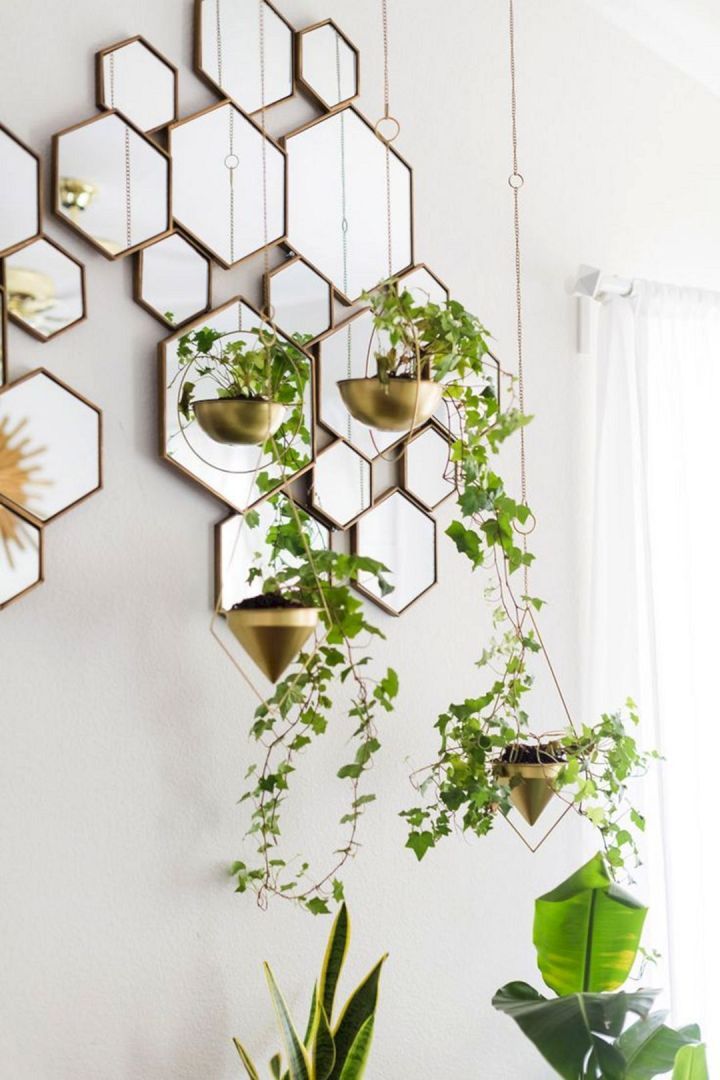
Alternatively, for those that aren't green-fingered there's always the option to decorate with flowers, plus there are plenty of artificial plants available for an everlasting display.
1. Fill your shelves with house plants
(Image credit: Future / James Merrell)
For many interior designer and stylists, plants are a must have when it comes to decorating shelves.
'Plants will bring an element of softness and freshness to any shelf, especially those that trail,' says Simon Temprell, interior design manager at Neptune . 'Succulents have architectural style and demand very little attention, so they can be useful for filling the gaps where objects feel a little too rigid.'
Featuring a mix of cascading ferns, spider plants and potted pelargoniums, this abundant display creates a feeling of an indoor jungle in this family living space.
2. Soften partition shelving
(Image credit: Future / Mary Wadsworth)
A selection of different indoor plants can make the perfect finishing touch to a room divider in an open-plan living room.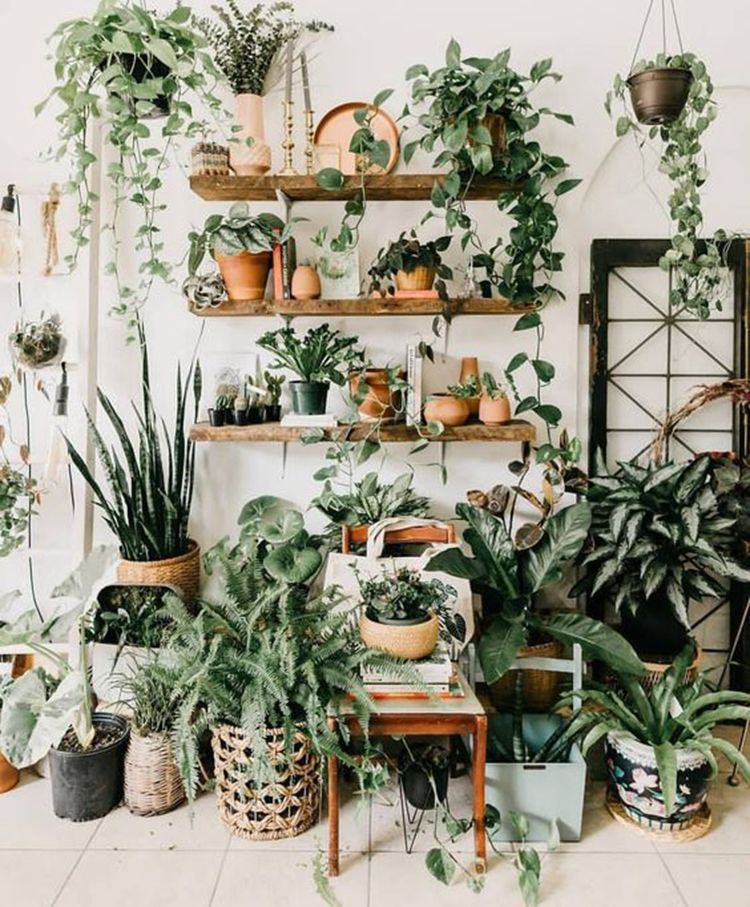
As well as providing pops of vibrant color, plants with sculptural, organic forms are a fabulous antidote to the strong architectural lines of contemporary partition shelves.
Styled with a mix of plant species placed at different heights (from top: Devil's Ivy, Snake plant and Philodendron), these shelves help subtly zone this living and dining space while maintaining a light and airy feel throughout.
3. More is more
(Image credit: deVOL)
When it comes to decorating with plants don't hold back, as abundance is the key to a successful botanical theme, says Helen Parker, creative director at Devol . From shelves and windowsills and even hanging from the ceiling, think creatively about how you can use them to create an immersive and magical feel.
'Just popping a couple of plants on your windowsill isn’t enough, they need to become part of the room,' she says.
'Abundance is important, the more you commit to the botanical theme the more impressive it looks, walking into a foliage-filled room is uplifting,' adds Parker.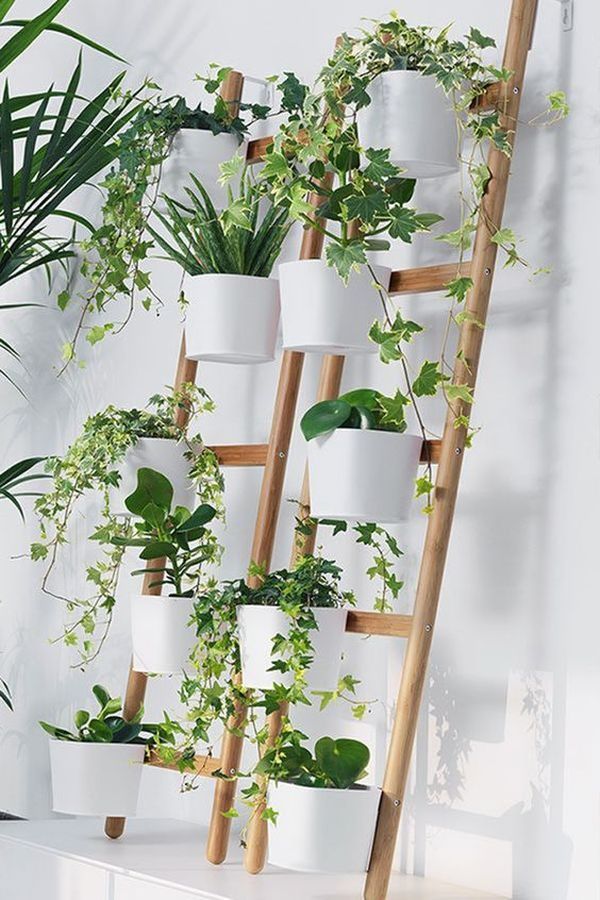 'It is high maintenance but really worth the effort when they flourish and your room is ever-changing with new growth.'
'It is high maintenance but really worth the effort when they flourish and your room is ever-changing with new growth.'
4. Layer plants at different heights
(Image credit: Loop Living)
Layering plants is a lovely way to bring life and interest to a white living room. Choose a variety of forms and shapes and display them at different heights, either raised on stands or hung as part of a gallery wall, for an indoor jungle feel.
'Plants with variegated leaves and strokes of pink are great as decor elements because of their dramatic contrasts. They literally look like an artist created them,' says Eli Manekin.
'I always recommend potting in white planters in simple shapes, as these don't compete with your plant.'
5. Decorate with indoor trees to create a focal point
(Image credit: Future / Paul Raeside)
If the indoor jungle look is too much, just a few carefully positioned can be enough to elevate a space. When decorating with plants, homeowners are increasingly searching for large statement plants to create a focal point say the experts.
'We are seeing a trend for people to use house plants not as accessories for a room but as an integral design element, treating plants the same way they would treat furniture or art pieces,' says Hollie Newton, chief creative officer of Sproutl . 'Using plants architecturally as part of a design scheme can instantly transform any space.'
For plants to make a statement try the banana tree, elephant's ear, pygmy date palm or indoor trees like citrus or fig trees. This weeping fig tree really makes the most of this high-ceiling Georgian dining room and helps lead the eye upwards to the beautiful architectural coving.
6. Place plants on the windowsill
(Image credit: Leaf Envy )
The windowsill is the perfect place to display light-loving house plants. However, when it comes to how to care for house plants in winter, be careful about keeping them here – while they will appreciate the daylight, some can be damaged by the drafts and fluctuations in temperature.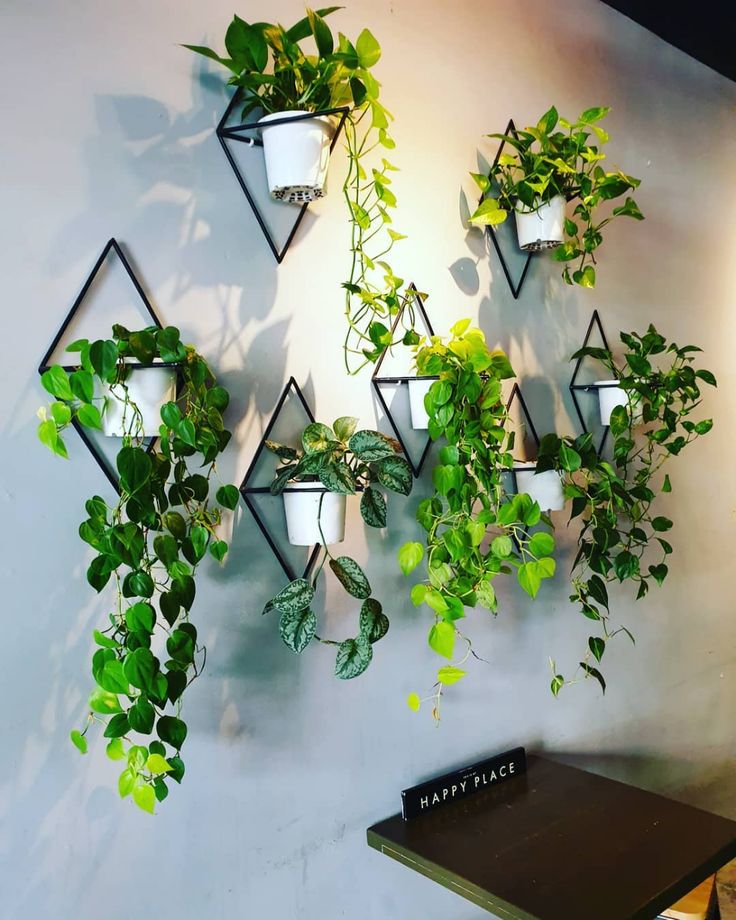
‘Be mindful of extremes – flowing air vents, fireplaces or proximity to exterior doors. Plants thrive in a consistent environment, where possible position plants away from areas that fluctuate frequently,’ advises Emily Wight, co-founder of indoor plant store Foli .
7. Arrange plants around the bed
(Image credit: Paul Raeside)
As places of recuperation and relaxation, bedrooms are the perfect place to embrace biophillic design – the practice of using nature to bring harmony. By placing the best air cleaning plants near your bed, you can help create a healthy environment for sleep.
'Your bed is likely to be the centrepiece of your bedroom and can easily be freshened up by surrounding it with air purifying plants, which will help encourage relaxation and aid a good night's sleep,' says Beth Chapman, founder of Leaf Envy .
'Not only will clustering plants near your bed create a beautiful display, but they will also eliminate airborne toxins from your room.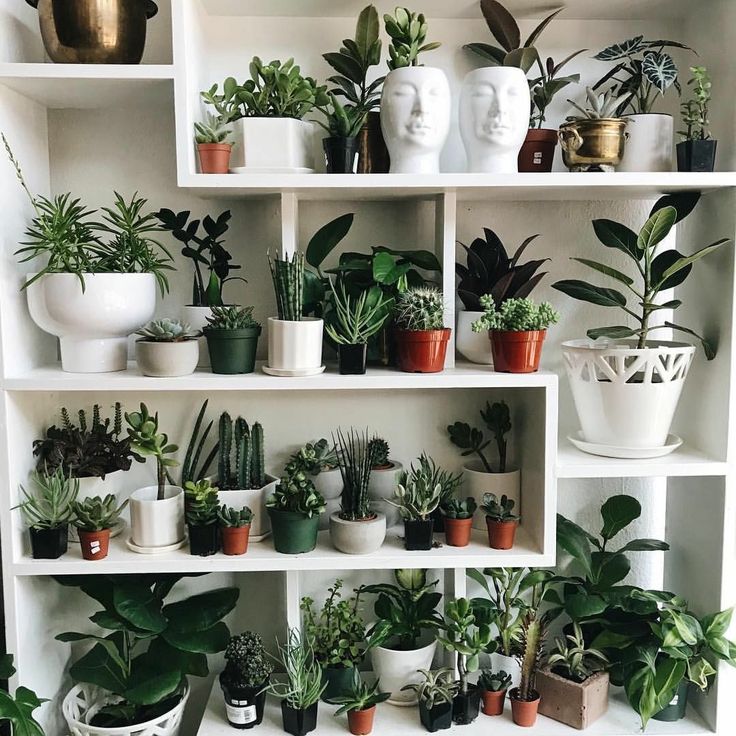 Try mixing medium size plants, like the Calathea Orbifolia, and pair with large plants that have arching fronds, like the Kentia Palm.'
Try mixing medium size plants, like the Calathea Orbifolia, and pair with large plants that have arching fronds, like the Kentia Palm.'
8. Create a bathroom oasis
(Image credit: Future / Brent Darby )
Bathrooms can easily be overlooked when it comes to decorating with plants, but as humid spaces they make the perfect environment for many indoor plants, plus will help bring a magical, spa-like feel to the space.
'When selecting what plants you would like to add to your bathroom, consider the lighting in the space to ensure it’s suitable for your plants to flourish in,' says Leaf Envy's Beth Chapman. 'Dedicate windowsills to plants that require that extra bit of lighting, and for bathrooms with low lighting, opt for plants like the Boston Fern that loves humidity.'
9. Think about the container
(Image credit: deVOL)
When arranging indoor plants think about the pot or container they are displayed in and choose a vessel to match your decor.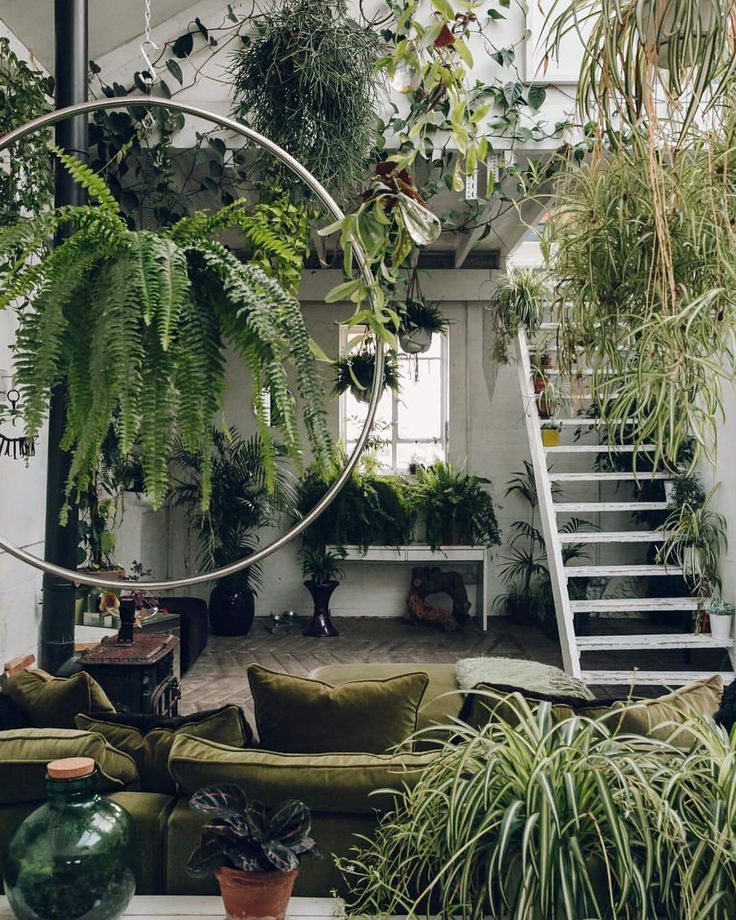 Terracotta pots will bring rustic charm perfect for farmhouse kitchens while a woven basket would be perfect for bringing texture to a Scandinavian living room.
Terracotta pots will bring rustic charm perfect for farmhouse kitchens while a woven basket would be perfect for bringing texture to a Scandinavian living room.
'I find potting plants up in old terracotta pots and vintage garden urns makes them feel more special and cohesive,' says Helen Parker of Devol.
Whatever pot or vessel you chose ensure it have good drainage – leaving house plants sitting in standing water is a recipe for failure!
10. Group plants on a table
(Image credit: Future / Carolyn Barber)
Whether part of your entry table decor ideas or displayed on a table by a window, clustering plants together is a lovely way to create a decorative focal point. For best results pick a variety of different leaf shapes and forms, and stagger the heights, placing the tallest at the back and small pots at the front.
11. Brighten up a corner
(Image credit: Kitesgrove)
It can be tricky to know what to do with an empty living room corner, but adding a large houseplant will instantly bring purpose and brighten up the space.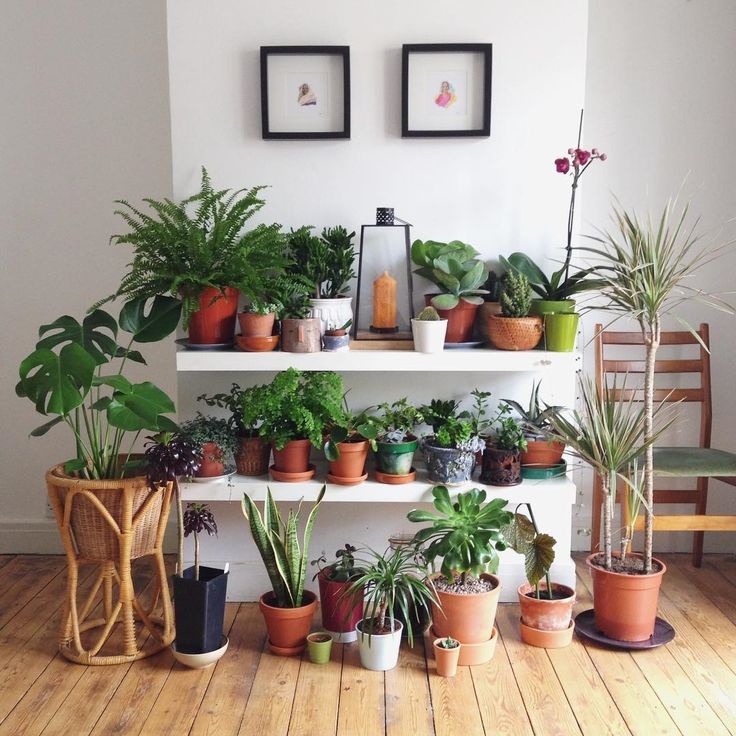
'Incorporating plants and greenery into a space helps it to feel layered and welcoming, adding natural texture, organic shapes and a pop of color to the room,' says Katie Lion, senior interior designer at Kitesgrove .
'Here, we have added a fig tree into the corner of the room to visually soften the space and enrich the green tones within the room palette. Plants offer a sense of wellbeing and calm to a space, bringing the outdoors in for a balanced interior that you want to spend time in.'
How do you decorate a room with plants?
There are endless ways to decorate a room with plants. For maximum impact, layer plants of different shapes and textures – from trailing varieties to big leafy palms – and display them at different heights, to create an immersive, indoor jungle feeling. Alternatively, select a few statement plants to create focal points within a room.
Plants are a brilliant tool for softening living spaces, particularly those with strong angles and architectural features, and look particularly effective incorporated into bookshelf ideas or grouped as part of your mantel decor ideas.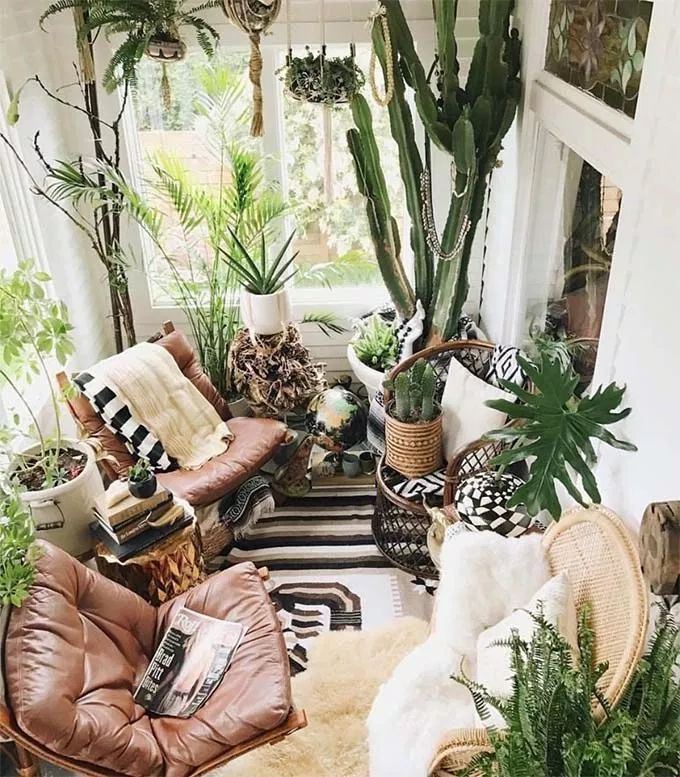 'Remember plants and greenery will add life to your shelving, so be sure to include them to bring a sense of the outdoors in and help ground the space,' says Emma Deterding, founder and creative director, Kelling Designs .
'Remember plants and greenery will add life to your shelving, so be sure to include them to bring a sense of the outdoors in and help ground the space,' says Emma Deterding, founder and creative director, Kelling Designs .
However, before you decorate a room with plants, 'the first thing to consider is the environmental needs of your houseplants: do they need plenty of direct sunlight? Or prefer somewhere dark and cool?' says Sam Hood co-founder and chief creative officer at Amara .
'If this extra care sounds like too much work, faux plants or dried stems like pampas grass and eucalyptus look just as natural and can be homed in stylish vases and planters.'
(Image credit: Future / Paul Raeside)
How should I arrange my living room with plants?
There are many ways to incorporate plants into your living room from incorporating them into your living room shelving to hanging them as part of your wall decor.
'Mixing different sizes, styles and textures of pots in complementary colours is a sure way to create an individual style and identity to your home space,' says Beth Chapman, founder of Leaf Envy.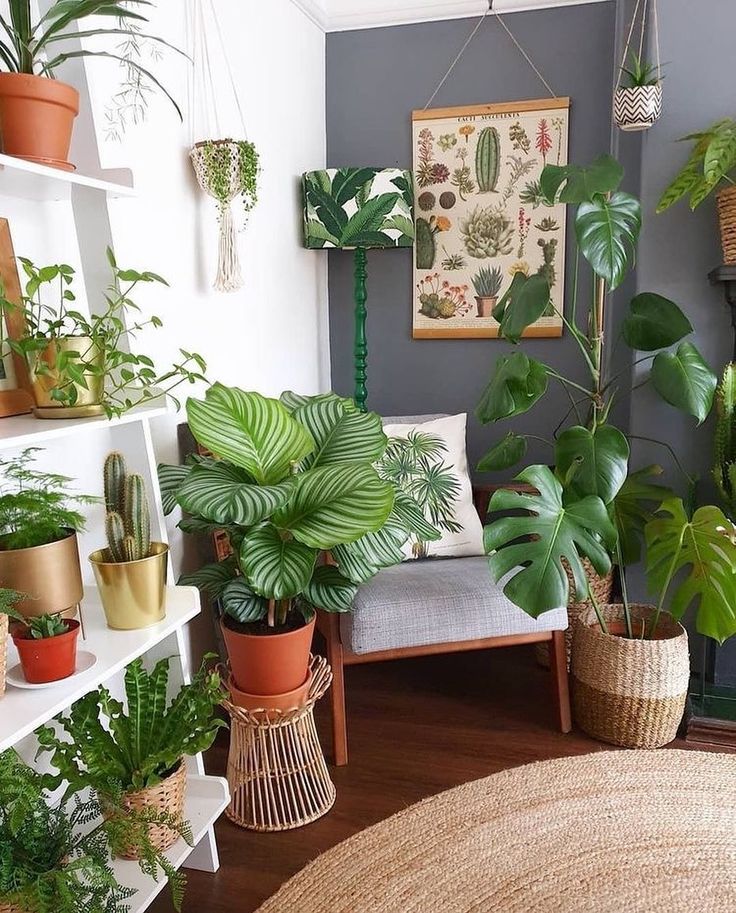
'Groups of three work well, in varying heights. If you like a more minimal style, try placing a favourite plant cutting in a propagation container as a feature and enjoy watching it flourish.'
(Image credit: Future/Paul Raeside)
Pippa is Content Editor on Homes & Gardens online contributing to Period Living and Country Homes & Interiors print issues. A graduate of Art History and formerly Style Editor at Period Living, she is passionate about architecture, creating decorating content, interior styling and writing about craft and historic homes. She enjoys searching out beautiful images and the latest trends to share with the Homes & Gardens audience. A keen gardener, when she’s not writing you’ll find her growing flowers on her village allotment for styling projects.
100+ Best ideas | Indoor plants in the interior (80 photos)
Using compositions created with the help of indoor plants, in compliance with the rules and requirements of phytodesign, you can give the interior a new life, filled with cleanliness, freshness and comfort.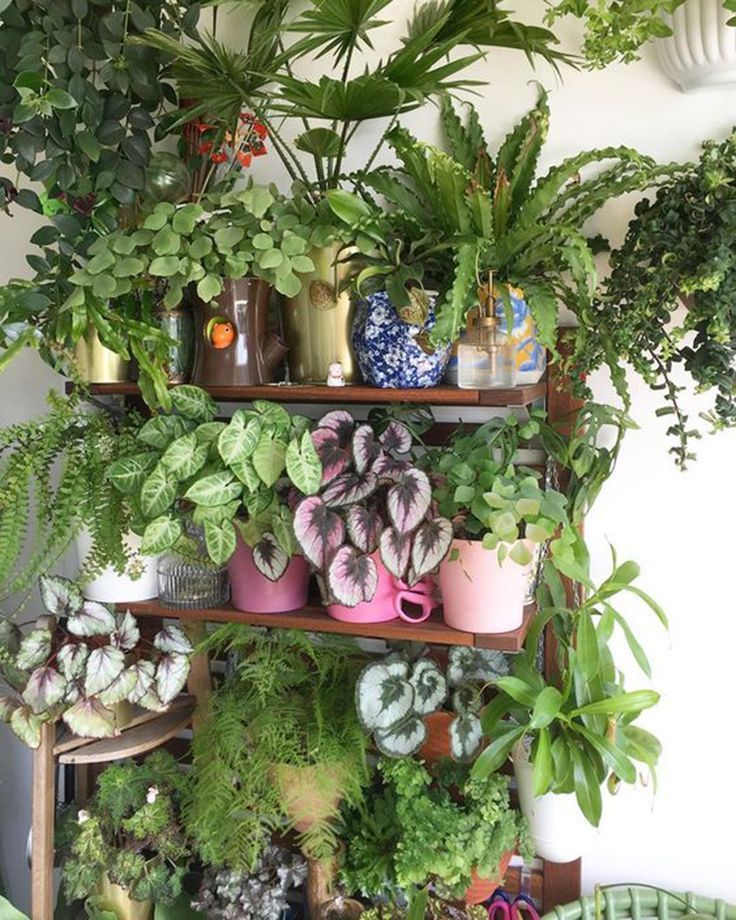 Indoor plants in the interior help to focus on the strengths of the situation, mask the shortcomings of the space, fill it with soulfulness and beauty in every centimeter. Thus, phytodesign not only improves the microclimate of the premises, but also makes it possible to radically transform any home without serious financial investments.
Indoor plants in the interior help to focus on the strengths of the situation, mask the shortcomings of the space, fill it with soulfulness and beauty in every centimeter. Thus, phytodesign not only improves the microclimate of the premises, but also makes it possible to radically transform any home without serious financial investments.
Interior decoration with houseplants
If you choose the right flowers and plants and correctly place them in the room, you can make your interior sparkle with new colors. Here are some examples of how indoor plants can be used effectively at home:
- Vertical gardening can divide a large room into two different functional areas, such as a kitchen and a living room.
- The presence of green decorative elements will help create an elegant backdrop for delicate and romantic designs.
- Climbing plants will solve the problem of low ceilings, visually lifting them, giving the space extra volume.
An original composition of various types of domestic cacti
Green contrasts beautifully with white, so the best solution would be to place the plant against a snow-white wall.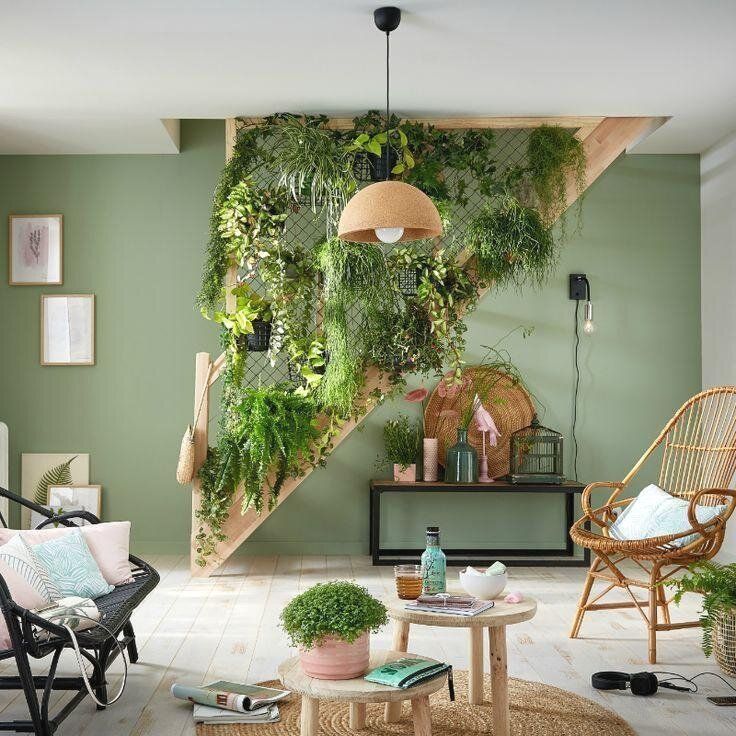
Tip! When decorating the interior of small rooms, do not use large plant species. For cramped spaces, ampelous plants placed in hanging planters and placed in the background are perfect.
Greenery stretching upwards can visually raise ceilings. But don't overdo it, as it can have the opposite effect.
Picturesque plants with a rich and vibrant green color will perfectly fit into the home interior
As a rule, modern apartments are associated with multifunctional spaces that often require unobtrusive zoning. A similar problem is easily solved by indoor plants whose photos are posted below in our article.
When choosing flora for the bedroom, try to opt for tall and unpretentious indoor plants.
Both woody and herbaceous vegetation can be used to create a harmonious interior design. Tall palm trees, elegant ferns, graceful ficuses, unpretentious cacti, climbing ivy are perfect for these purposes.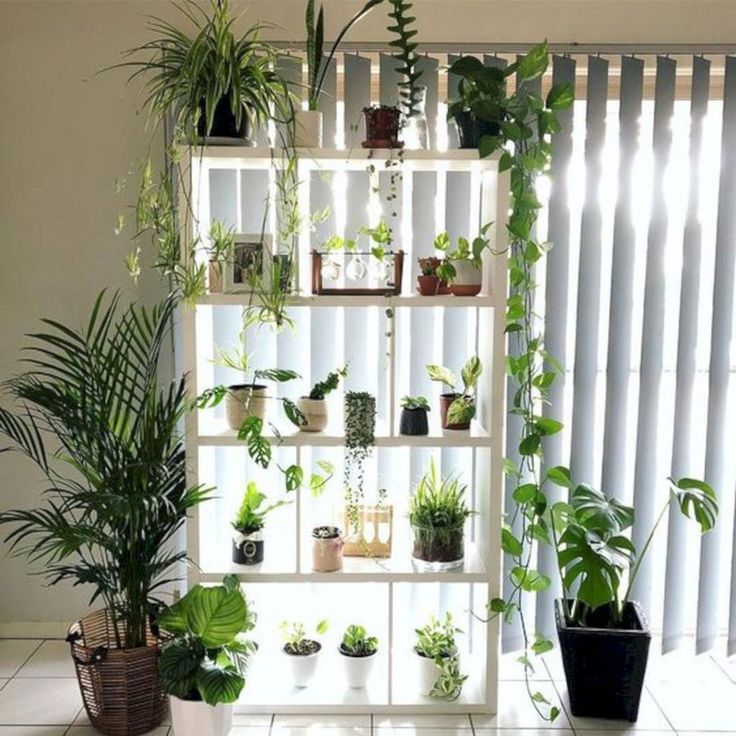
You can also use plants in a row with different stem heights and leaf textures. Such indoor plants include hibiscus, monstera, philodendron, chamedorea and others.
A living picture of indoor ivy will be a great decoration in the interior
Despite the fact that the cactus is an unpretentious representative of flora and fauna, it also requires proper care and attention to itself
Tillandsia is an ideal tool for zoning free space . It belongs to epiphytes, which, as you know, do not require soil. This plant feeds on microparticles and moisture droplets present in the air.
Tillandsia eucalyptus allows you to create living curtains of amazing beauty that perfectly delimit the space.
Tillandsia in the interior of the living room
Tillandsia in the original hanging pot
Where and how best to place indoor plants
Both walls and furniture can serve as a background for plants.
Given this, it is advisable to use large-leaved plants in rooms with wallpaper decorated with small patterns.
As for small-leaved plants, plain walls, preferably in light colors, can play the role of a background for them. The composition will logically complete the composition with room decor and textiles, selected taking into account the colors of flowering plants.
Bright interior of the living room with beautiful indoor plants
Bright interior with a large abundance of living plants
Contrasts of small and large plants will look very advantageous. No less appropriate will also be crops with different textures and leaf shapes.
Important! A sense of proportion is a vital condition when choosing possible combinations of interior landscaping. If you neglect this rule, you risk turning your home into a tropical greenhouse or jungle.
For example, if you take a monotonous background, complemented by interspersed with several crops with bright and multi-colored foliage, then this option will be much more advantageous than mutually overlapping colorful plants.
A plant with large leaves will be a great addition to both classic and modern interiors
Indoor plants and decorative pillows stylized as them will help to dilute the monochrome of a snow-white interior
Containers of various sizes, flower pots and pots. Their selection must be done both for the style and for the color scheme of the interior.
- Single and combined flowers and plants can be planted in containers with unusual shapes and original designs.
- Bright, eye-catching plants are best used in inconspicuous pots. The inexpressiveness of the latter will additionally emphasize the attractiveness of cultures.
In addition to the spatial and compositional aspects, you also need to take into account the rules of maintenance, growing habits, environment and plant care requirements. That is why the purchase of crops must be made only when there is full confidence that suitable conditions have been created for them.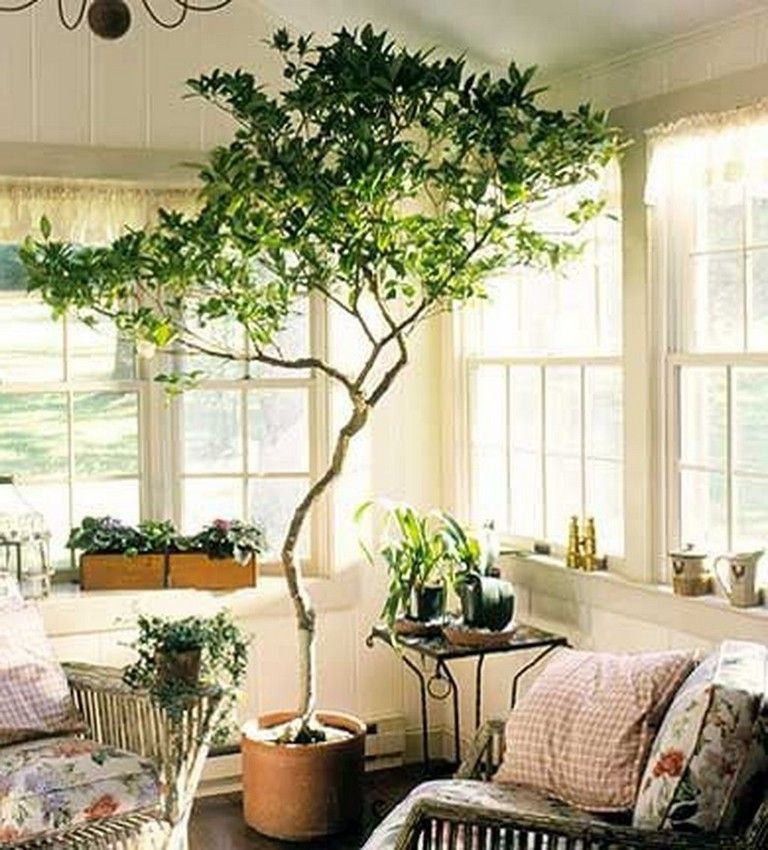
Loft-style interior with house plants
The perfect combination of gray and green in the interior
Vertical gardening - newfangled design trends
Vertical gardening is the ideal solution in terms of perception in terms of perception. Ceiling, as well as wall plant installations not only have an unusual appearance, but also the ability to harmoniously fit into modern interior solutions.
Today, the following types of vertical compositions are distinguished:
- Ceiling installations;
- Phyto-pictures;
- Green walls;
- Phytomodules;
- Suspended and mobile compositions.
Vertical landscaping - can be created from ivy, tradescantia, stabilized moss, dracaena and other plants.
The choice of colors for compositions is usually carried out according to one's own tastes and preferences.
Plant phytomodule - a stylish way to decorate a wall
Incredibly beautiful hanging arrangement of flowers and house plants
If the ceiling height allows, then indoors you can organize a vertical flower bed of different types of plants planted in pots ending with delicate light green tones.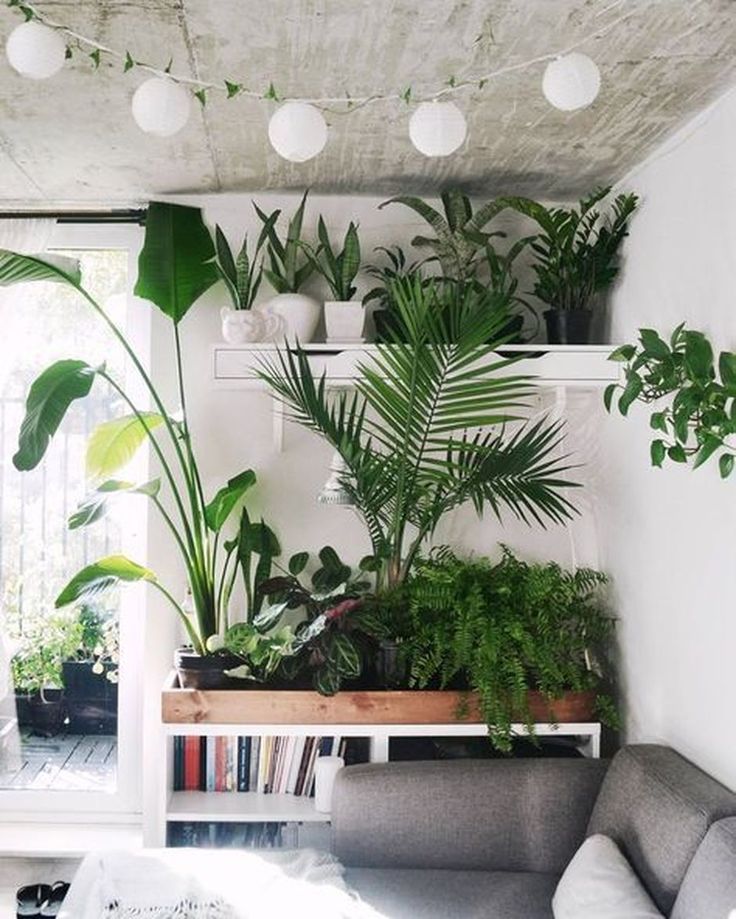
Tip! Such compositions will become brighter if you use flowering orchids, arrowroot, phytonia and other similar plants.
If desired, the recreation area can be turned into a real botanical garden, the main thing is to maintain a sense of proportion
By placing indoor plants on a mobile table, you will get a mobile living corner that, if desired, can be moved to another place
Fundamentals of phytodesign - landscaping the interior with your own hands
Today there are a large number of companies specializing in phytodesign and the creation of appropriate interior gardening solutions. However, if desired, vertical gardening can be arranged independently, for which there is a lot of useful information, photos and videos on the Internet on this topic.
When choosing plants that will be used to create indoor compositions, it is advisable to use not only attractive, but also useful crops. These are not only practical, but also acting as a joy for the eyes of the plant.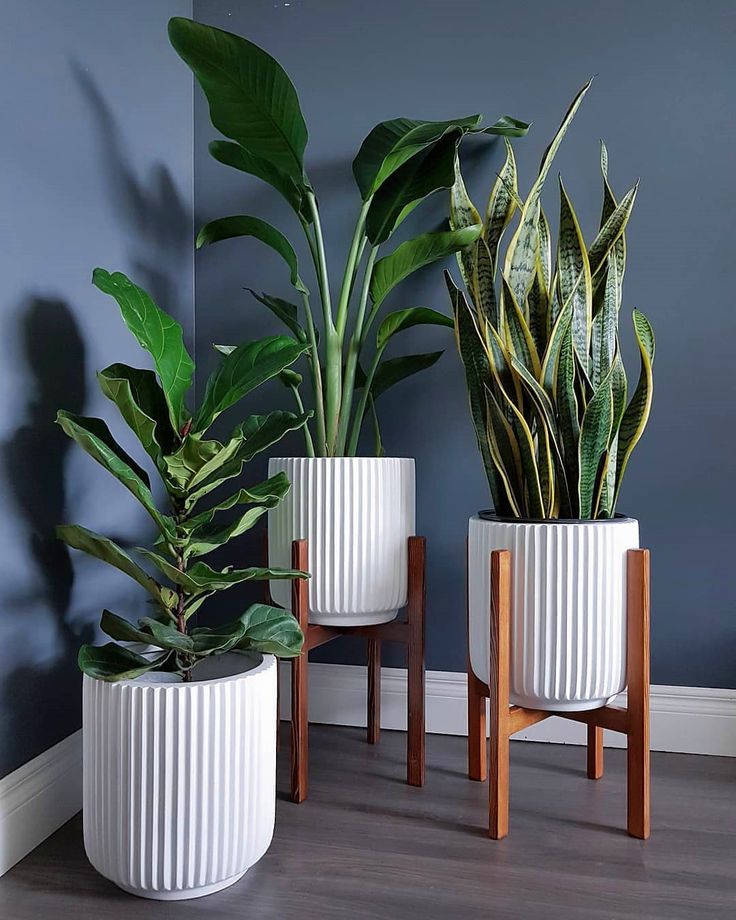
Tip! Lavender, valerian, citrus fruits, myrtle, gardenia, begonia, laurel, geranium and rosemary will help create a good mood, relieve anxiety and improve sleep.
Honeycomb Wall Shelf makes a great home for houseplants of different groups
Nice, cozy room with a large and bright plant near the wall
If there is a noisy highway near the house, the house has recently been renovated, there is high humidity in the rooms, or the rooms are furnished with new products made of wood materials, then so-called filter plants should be used .
Their characteristic feature is the ability to extract chemical compounds, toxins, hazardous fumes, heavy metals, urban smog, dust and other unwanted contaminants from the air.
Good to know! Indoor filter plants can also kill disease-causing microbes and inhibit the spread of mold.
Useful indoor plants
The following types of indoor plants perform the best "work" of the filter to purify the air from household toxins.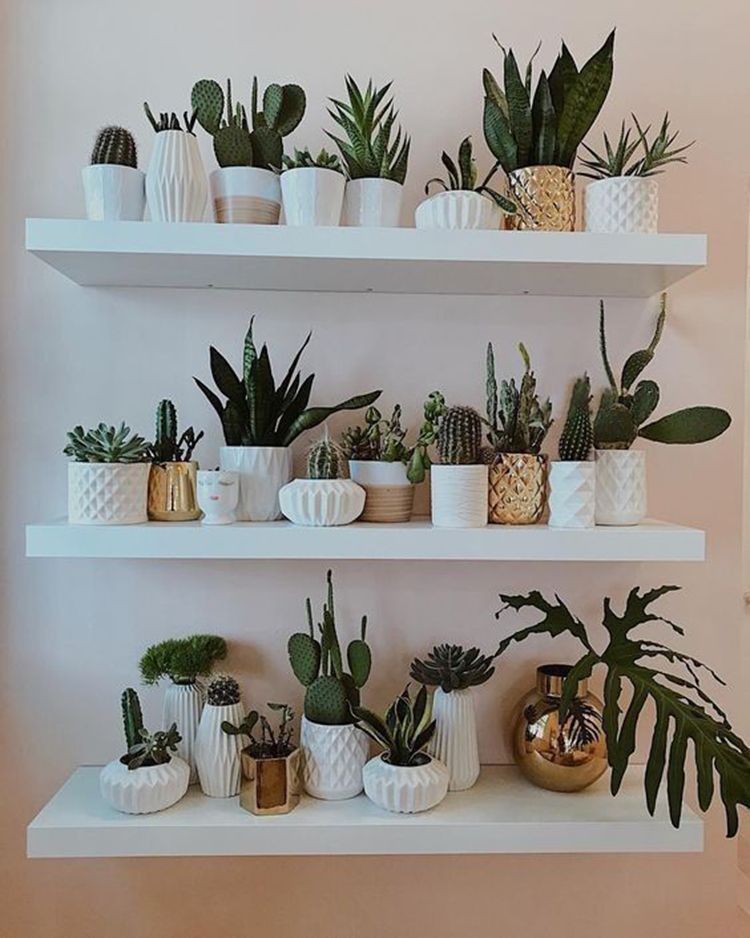
| Plant photo | Plant name |
| Chlorophytum (lat. Chlorophytum) | |
| Spathiphyllum (lat. Spathiphyllum) | |
| Crassula (lat. Crássula) | |
| Ivy (lat. Hédera) | |
| Scindapsus (lat. Scindapsus) | |
| Kalanchoe (lat. Kalanchoë) | |
| Pelargonium (lat. Pelargōnium) | |
| Ficus (lat. Ficus) | |
Sansevieria (lat.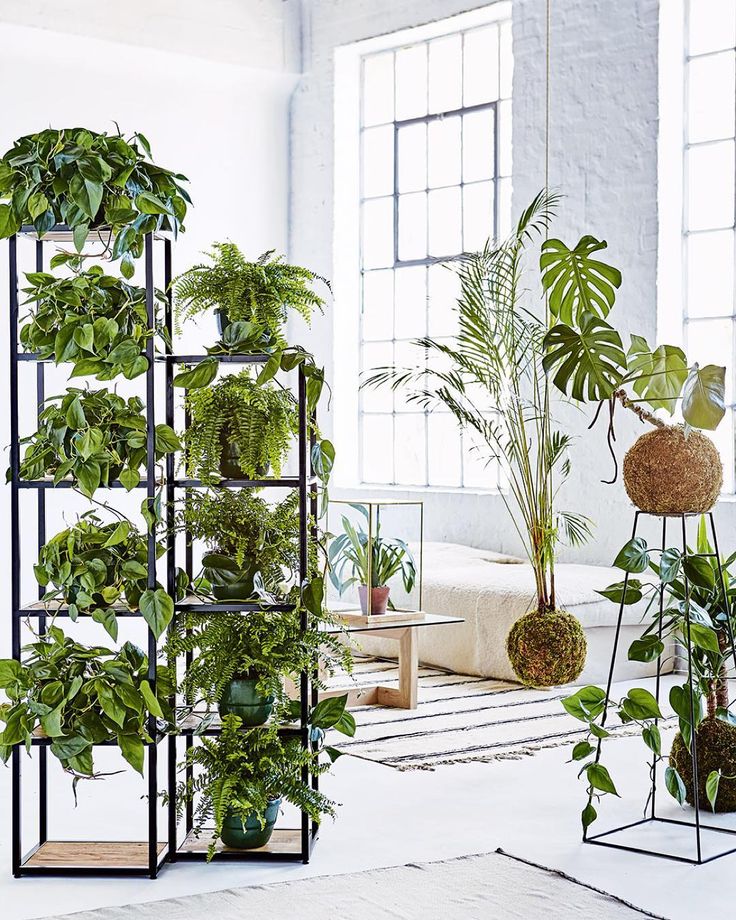 Sansevieria) Sansevieria) | |
| Dieffenbachia (lat. Dieffenbachia) | |
| Anthurium (lat. Anthúrium) | |
| Aloe (lat. Áloë) | |
| Climbing Philodendron (lat. Philodendron hederaceum) | |
| Chamaedorea elegans |
Tip! "Filter" plants can be placed anywhere in the room. It is more expedient to use them where people living in the house spend the most time.
Indoor plants in the home interior (photo)
Indoor plants with proper selection of their varieties and placement not only serve as a worthy decoration of the premises, but also bring a sense of comfort to them. It is important to take into account the recommendations on the possible harm to health by some flower crops that have toxic properties or negative energy.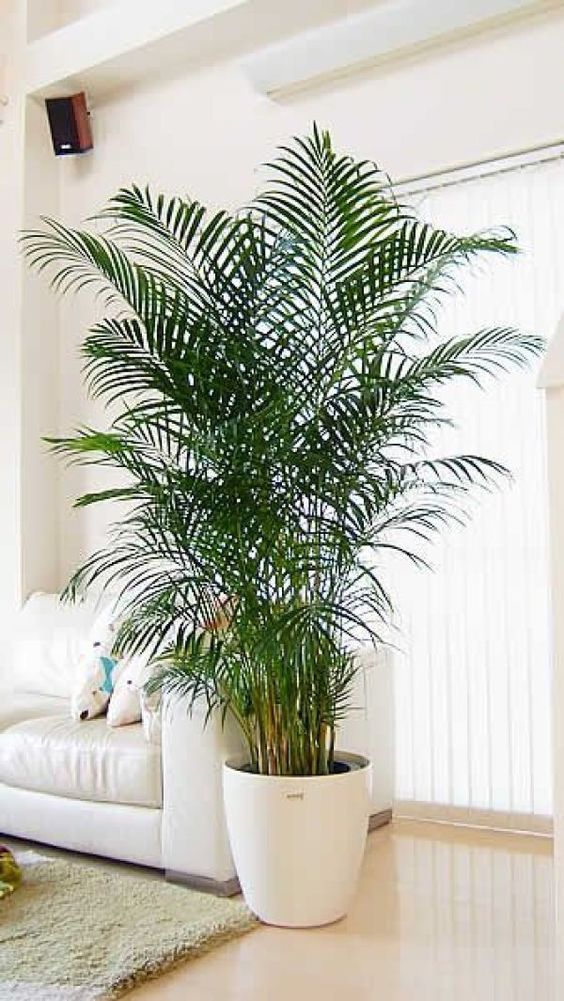
Kitchen
The kitchen is the warmest and sunniest place in the house. In addition, the air in this room is always moderately humid and ventilated more often than others. Therefore, the kitchen is ideal for a very wide range of indoor plants and flowers.
However, natural favorable conditions do not at all guarantee that your green pets will grow almost on their own. They also need proper care and good living conditions.
An interesting option for decorating the kitchen can be a living wall made of plants
Advice from an expert in phytodesign
- Since the air temperature in the kitchen is slightly higher than in other rooms, plants that love heat should be chosen for it. These plants include begonia, dieffenbachia, coleus, allamanda, anthurium, pelargonium and others.
- If the flower is planned to be placed on the windowsill, the choice should be made in favor of photophilous plant species. The most popular of them are pelargonium, gloxinia, dracaena, cattleya, monstera, khirita, agave, azalea, orchid, cactus.
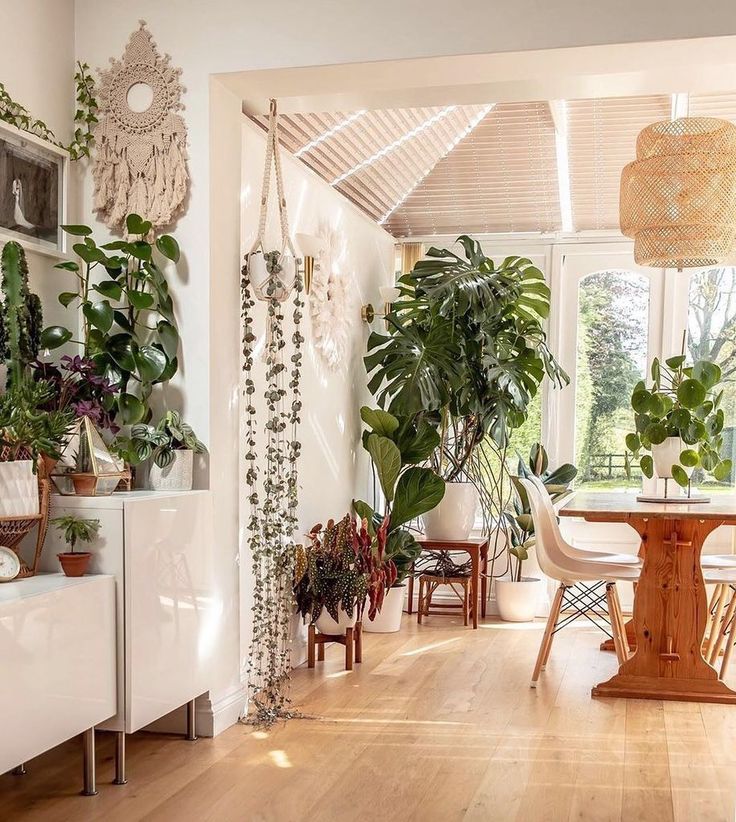
- As for plants that do not need bright lighting, then for them in the kitchen you can find a suitable place where the sun's rays do not fall. It can be a shady corner of the room, wall shelves, consoles or small tables set away from the window. Of the shade-loving crops, one can distinguish - clivia, streptocarpus, aglaonema, aspidistra, gardenia, alocasia, creeping callisia.
Important! It is strictly forbidden to place indoor plants in the immediate vicinity of a refrigerator, stove or oven. Hot air, just like cold air, is detrimental to most species of flora.
It is also not recommended to place flowers near the sink, as they may be splashed with grease and drops of detergent. If a dishwasher is used for washing dishes, you should not be afraid, the bright colors of green pets will only emphasize the beauty of the working area.
Even a small amount of greenery can radically transform the interior of the kitchen
In a small kitchen, it is better not to use large plants with a spreading crown or lush forms as decoration.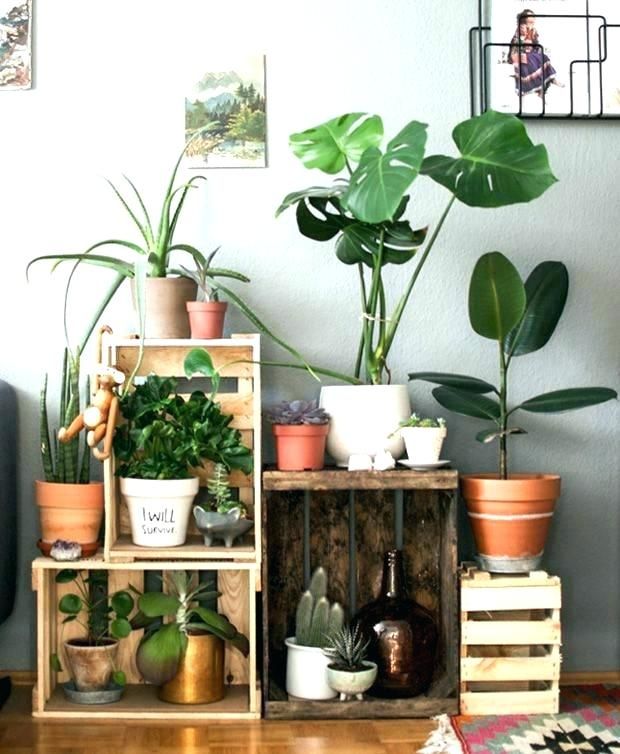 If the room is large, voluminous greenery opposite will look very advantageous.
If the room is large, voluminous greenery opposite will look very advantageous.
Trendy, clean and casual kitchen design adorned with beautiful plants
Indoor plants harmonize well with the kitchen, which has a white glossy surface
Hanging shelves - an ideal place in the kitchen for potted plants
Living room
an indicator of the impeccable taste of the owners of the house. This is a kind of center of attention, so the interior design of the living room must be approached responsibly. It should be functional, comfortable, beautiful and cozy.
The presence of decorative plants in the living room will emphasize the individuality of the room, becoming a stylish accent in the overall interior. The principle of their arrangement is still the same, at the windows - loving light, in places where the sun practically does not fall - shade-tolerant.
Bright and expressive interior of the living room in the style of pop art
A wonderful neighborhood of various plant species in the interior of the living room
A wonderful composition of small cacti in clay pots
indoor trees or plants in large flowerpots. This is a great way to dilute the interior and create an incredible feeling of lightness in space.
This is a great way to dilute the interior and create an incredible feeling of lightness in space.
- When composing unusual compositions of indoor flowers and plants, try to diversify the color scheme due to different shades.
- Use not only classic pots, but also original items such as floor stands, hanging pots, racks, shelving, whatnots. Representatives of the flora will look very beautiful in wicker baskets or wooden boxes.
Numerous ideas on how to decorate the interior of the living room with house plants can be found on the Internet.
Indoor plants help to improve the microclimate in the house
Beautiful decorative flower stands made of natural wood
Bedroom
The bedroom belongs to the rooms, the atmosphere of which must be absolutely safe. The favorable climate promotes relaxation during sleep, which allows you to rest and rejuvenate.
- When choosing indoor plants for the bedroom, it must be taken into account that they begin to absorb oxygen at night, saturating the air with carbon dioxide.
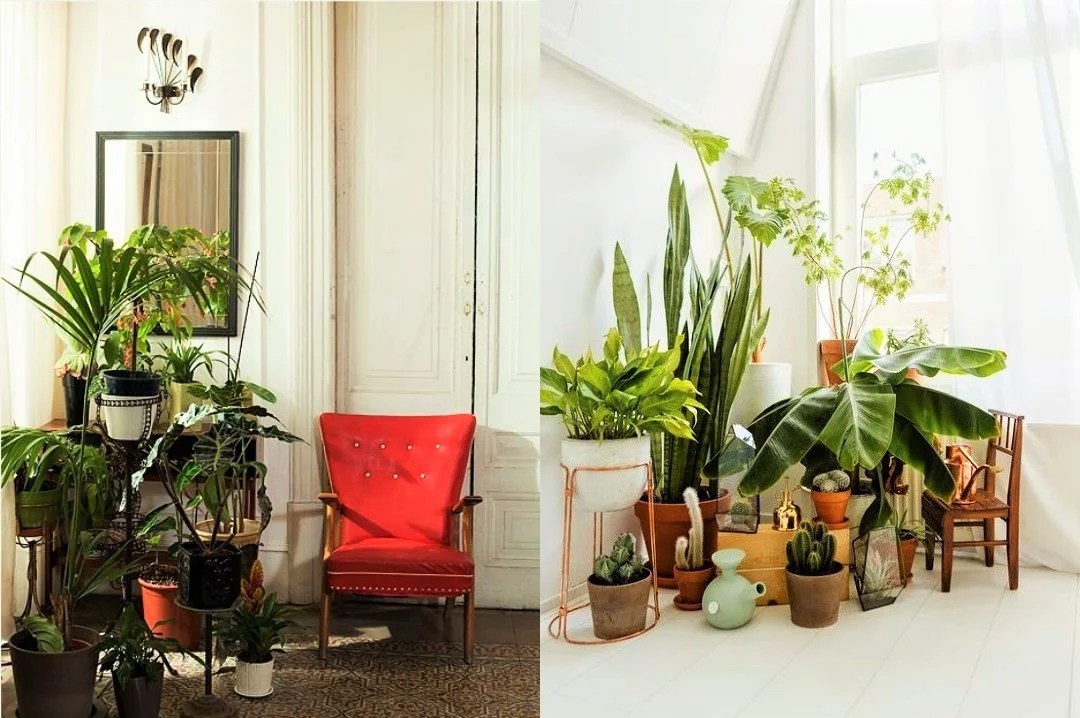
Important! The purchase of flowers that cause an allergic reaction or have toxic qualities is excluded. Exotics with sharp intoxicating aromas are also not suitable for the bedroom.
The snow-white tones of the bedroom in combination with indoor plants create an atmosphere of harmony and tranquility
The abundance of living plants in the interior of the bedroom gives a feeling of freshness and spaciousness
In order not to cause a constant feeling of lack of air, the appearance of morning dizziness, you should not turn this room into a greenhouse. It is enough to place three pots on the shelf with slow-growing plants that do not produce large buds.
The following representatives of room flora are considered the most favorable:
- Aloe , capable of absorbing formaldehyde from the air - a harmful substance present in particle board products;
- Uzambara Violet , which brings a spectacular decorative effect to the interior;
- Spathiphyllum , valued for its ability to purify the air from many harmful substances;
- Chlorophytum , characterized by unpretentiousness, elegance, the ability to effectively purify the air;
- Geranium that releases phytoncides beneficial to health;
- Fern , an undemanding plant species with medicinal properties;
- Laurel , which has a calming effect and improves the quality of sleep.

Indoor fern - ideal for the bedroom
Canarian date - an exotic plant with large bright green leaves
Plants must be carefully looked after, preventing rotting, midges and other pests. Dust is constantly wiped off the leaf plates, when watering, all the moisture that seeps into the pan immediately pours out.
Dieffenbachia, which has poisonous sap, should be noted among the plants that should not be used to decorate the bedroom. It is not recommended to grow lilies and orchids. These flower crops absorb a lot of oxygen, causing headaches and depression.
Beautiful indoor plants in pots
Inimitable alocasia in the interior of the bedroom
A beautiful, tall, decorative bonsai tree feels great in bright diffused light, so it is advisable to place it near a window
Entrance hall
It is possible to effectively decorate the entrance hall with flowers if it is spacious and well lit. Massive floor planters with large plants will perfectly fit into such conditions.
- Ficuses with an incredibly attractive homely aura with expressive glossy leaf plates become the centerpiece of retro style.
- Yucca, dracaena, bottle tree will serve as an excellent harmonious note for a modern or classic hallway.
- Modern space will be decorated with openwork palm trees or curly trimmed boxwood.
Tip! If the hallway is tiny and dark, unpretentious specimens that feel good in the shade should be selected.
Shade plants
- Aspidistra with large ornamental leaves;
- Sansevieria with luxurious elongated stems;
- Asplenium fern with openwork magnificence of the above-ground part.
If there are niches in the walls, bonsai trees are often used to decorate the interior of the hallway. Ivy creates a unique cheerful entourage, which freely frames a mirror or picture frames, flows along the walls, wraps around the shelves.
Sansevieria, better known as "pike tail", looks good in the hallway near the mirror0003
An interesting and unusual design of a pot made of a dried tree stump
Wicker baskets will become bright accents in your interior if you plant spherical indoor plants in them, such as saline or common myrtle
Bathroom
Placement of houseplants in the bathroom is less common, than in other rooms. This is due to limited space and the lack of a source of natural light in the planning of modern apartments.
Equipping bathrooms with windows is possible in detached houses. Plants that feel great in high humidity will successfully fit into such rooms:
- climbing specimens - ivy-shaped philodendron, golden epipremnum, small-leaved ivy;
- large-leaved - Attractive Monstera, Japanese Fatsia;
- flowering - Decembrists, chrysanthemums, cyclamen, violets;
- bush - chamedorea elegans, high aspiditra.
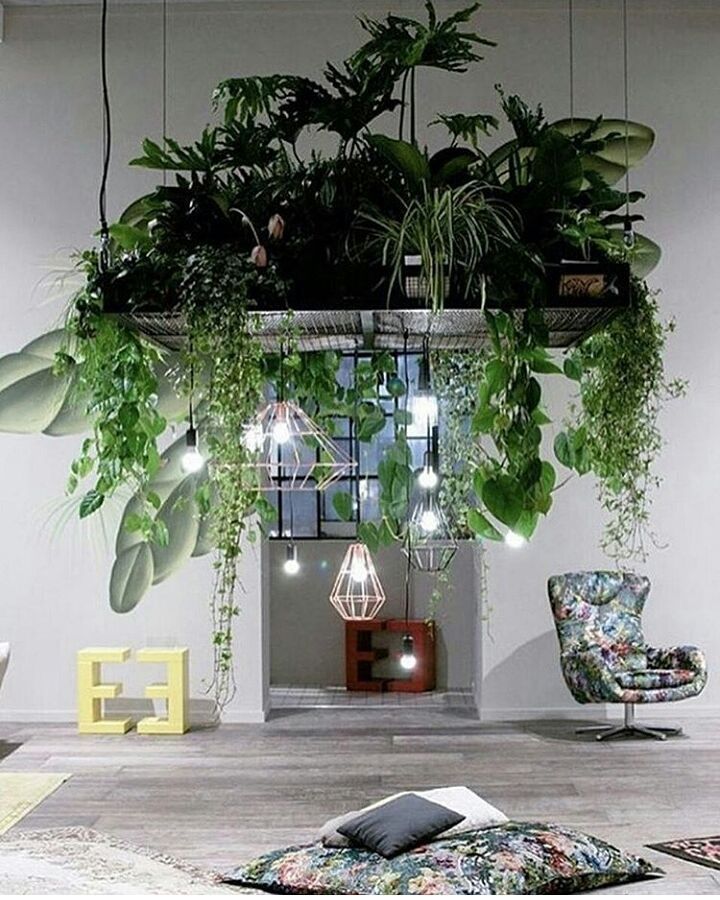
Useful tips and ideas
- If desired, alocasia, dieffenbachia, various ferns can be placed in a sufficiently spacious bath.
- To solve the problem of landscaping bathrooms, devoid of windows, special lighting devices help - phytolamps, which provide a degree of illumination sufficient for indoor crops in the desired range.
- Avoid the use of fragile pots, massive planters. The best material would be light plastic or thin sheet metal.
- All floor vases must be securely fastened. Suspended wall structures are located on the walls remote from the font.
- If you want to create a relaxing environment, you can bring a few pots of your favorite flowers during your baths. With this approach, they will not suffer from a lack of light.
- Given the specifics of the bathroom, artificial flowers are used in its design. They have no restrictions, so they allow you to create harmonious compositions in any style.
Monstera (attractive) - will make your bathroom special
Ficus feels great in the bathroom, as its wide and beautiful leaves absorb moisture well
Black and white interior goes well with green, this photo confirms this
Presence in the interior of bright accents, even in a small amount, helps to find the right color balance
Home gardening with proper selection of plant varieties provides a richer sound to the style solution of any premises.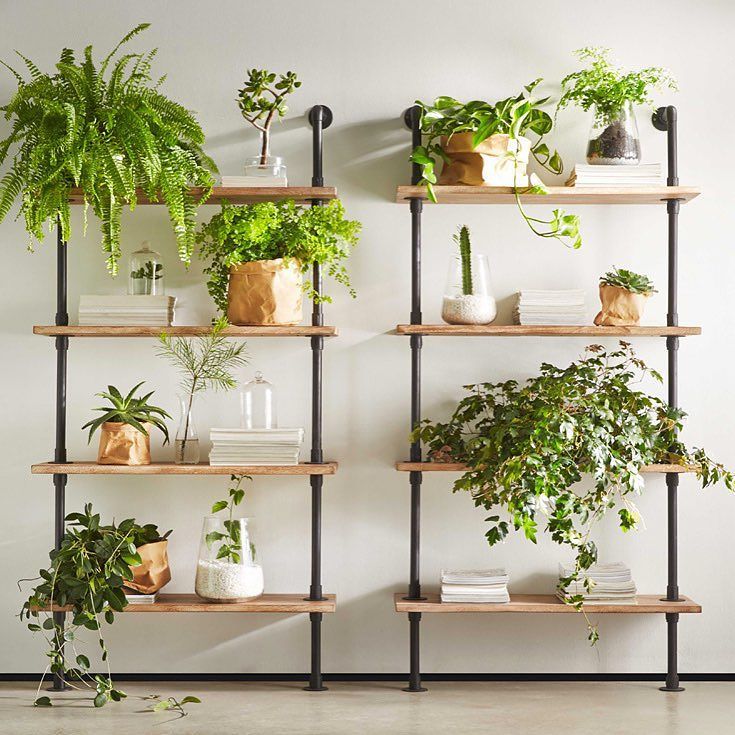
8 Cool Ideas - INMYROOM
Interior Decor
Upside-Down Planters, Minimalist Flora Cubes, Aqua Farm, Phyto Wall and some more Incredible and Stylish Ways to Add Live Greenery to Your Interior
Are you still putting flower pots on windowsills the old fashioned way? We have found eight new ways to break away from this familiar scenario and make indoor plants a decoration of the interior. Get ready to be amazed!
1. Inverted pots
In addition to the wow effect of hanging upside down plant pots, there are practical benefits. Such flowerpots perfectly save space and allow you to grow fresh herbs for salad even in the smallest kitchen.
2. Two in one: plants and lighting
Modern interiors are becoming more technologically advanced and decor more practical. A stylish houseplant combined with a lamp is a great example of the harmonious combination of several functions in one item.
3.
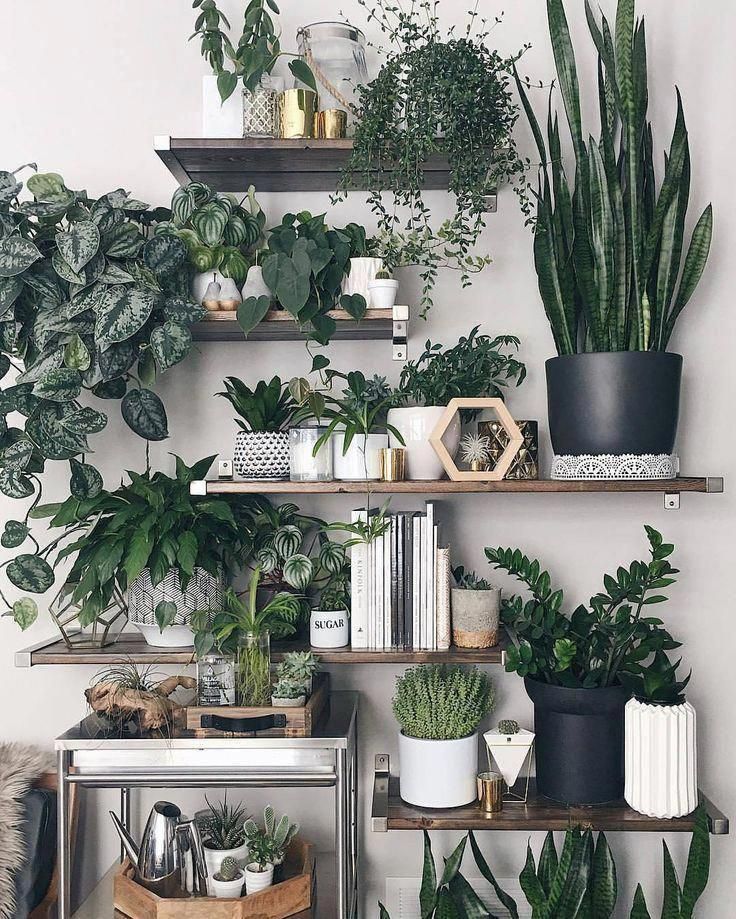 Flora cubes
Flora cubes Transparent flora cubes with colored edges are a prime example of how an ordinary houseplant can become a real design element of decor, combining style, aesthetics and practicality. The minimalistic design makes the solution versatile, suitable for any interior. And multi-level drainage protects the roots from excess moisture and allows you to water the flowers less often.
4. Aqua Farm
Another 2-in-1 solution is the Aqua Farm, which combines an aquarium and miniature plants in one. Such a system is not only original, but also self-sufficient: it allows you to do without watering and fertilizing indoor flowers, as well as without cleaning the aquarium. The secret is that the waste products of the fish nourish the roots.
5. Phytowall
Phytowalls, which are gaining popularity, are a powerful decorative technique and a significant contribution to a comfortable indoor microclimate. If desired, you can equip such a wall with lighting, automatic watering, and even connect it to the "smart home" system.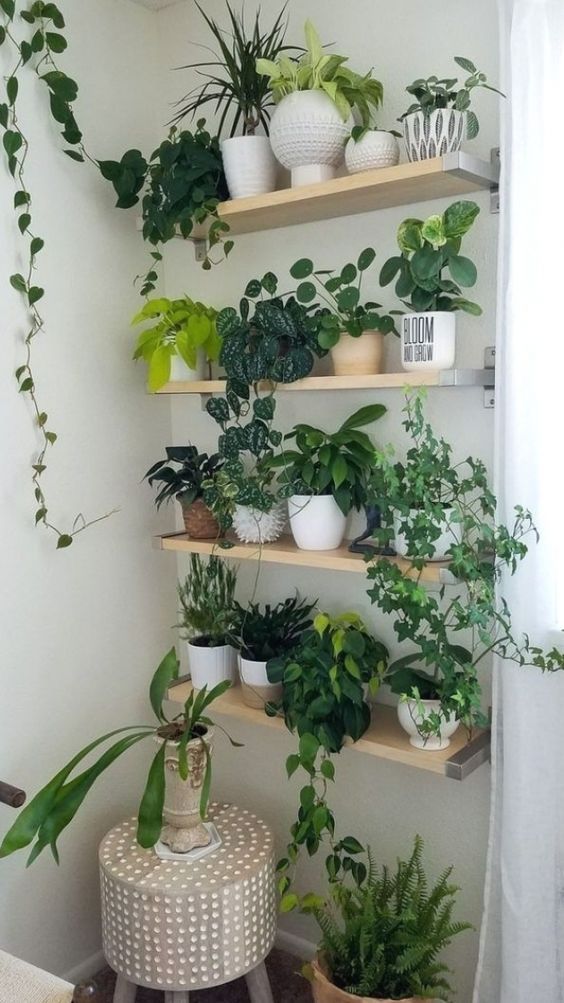
6. Special stands for flowers
A simple but effective solution to organize a "green corner" in a city apartment is special stands, pedestals, pedestals for flowers.
7. Hanging pots
Hanging planters in a variety of formats are a great alternative to window sill pots. Transparent models with plants that do not need soil look especially impressive.
8. Mini planter
Fans of elegant solutions will certainly appreciate the neat and unusual mini planter, which will find a place even in the tiniest corner of the apartment. Models on magnets can be placed on a refrigerator or magnetic boards, making up an original phytocomposition.
Pro's opinion: what to look for when choosing plants
It is difficult to find a house where there would be no plants: from flowering specimens to cacti. But often they look ordinary and boring. What to look for when landscaping an apartment in order to create a stylish interior - says an expert from Vibe Life Technologies.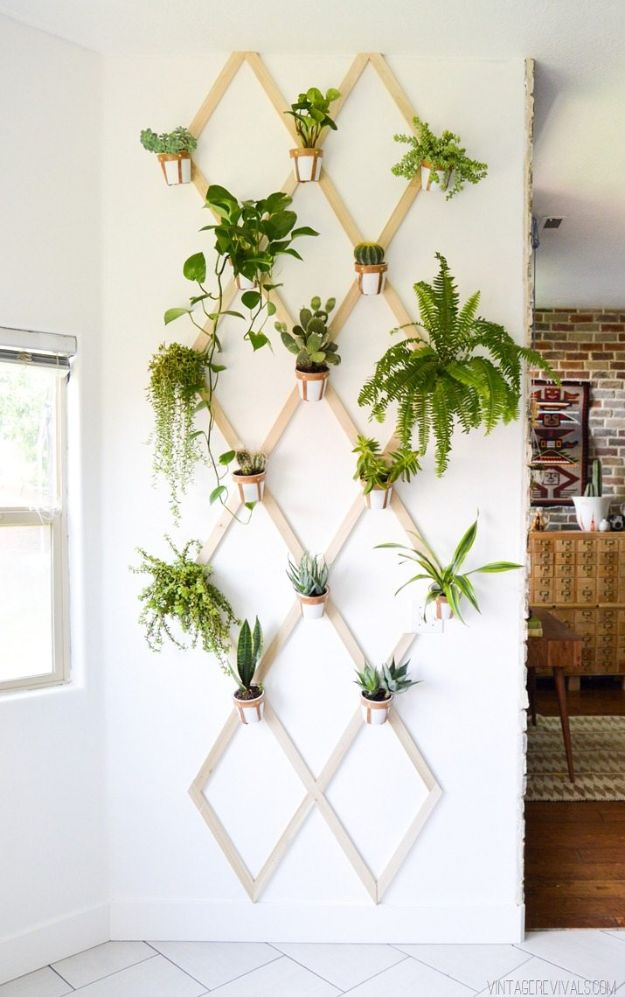
1. Appearance
Choosing a beautiful flower is not always enough, you also need to think about the design of the planter. Plastic pots in white or brown are associated with the window sills of hospitals, offices - they definitely do not belong in your home. Pay attention to more interesting and modern models: from concrete planters to transparent pots.
2. Farm use
Choose plants that not only look good, but also taste good. Surely you have seen Citrus Calamondin on sale - these small trees, by the way, are not only decorative. Their fruits can be eaten on the 3rd fruiting. Or maybe you want to grow a lemon at home and drink fragrant tea with it? All in your hands.
3. Health Benefits
If you don't know which plants to give preference to, choose those that release more oxygen: betel palm, spathiphyllum, sansevieria, ficus. Of course, the effect is not the same as from a walk in the forest, but we, the inhabitants of the metropolis, benefit from this.